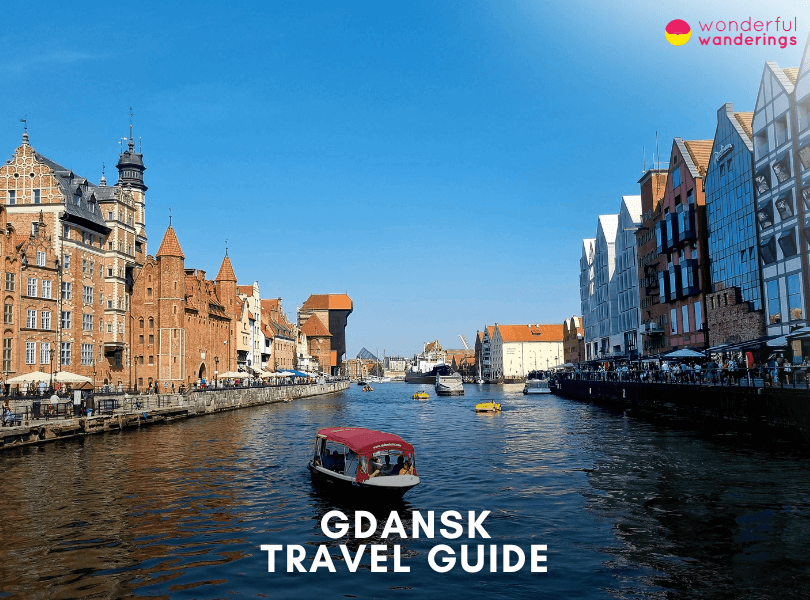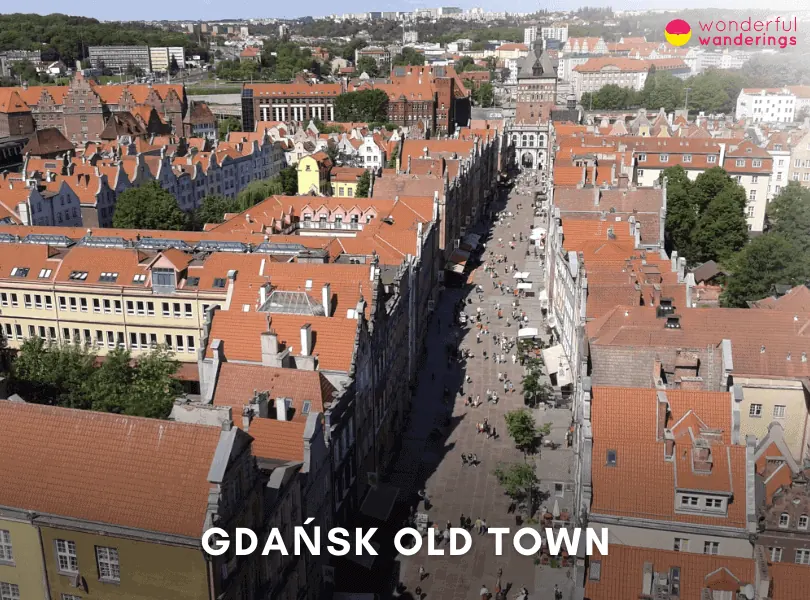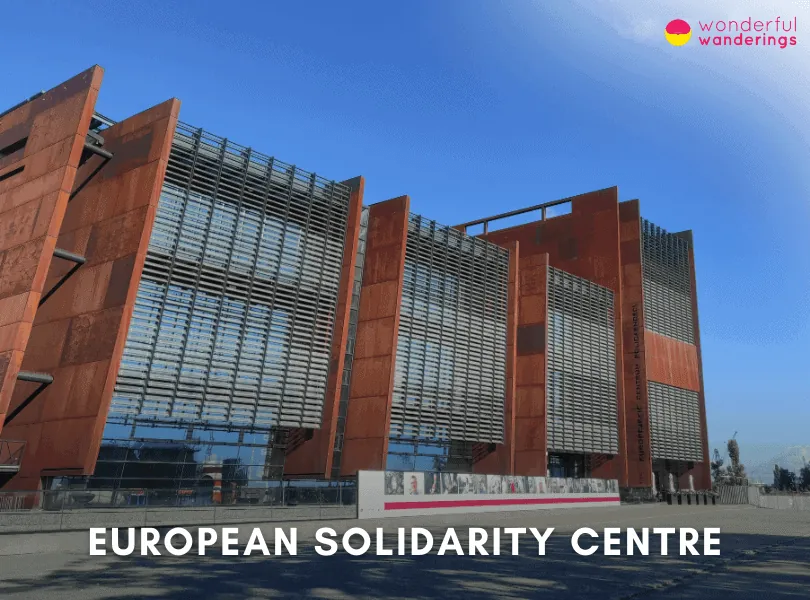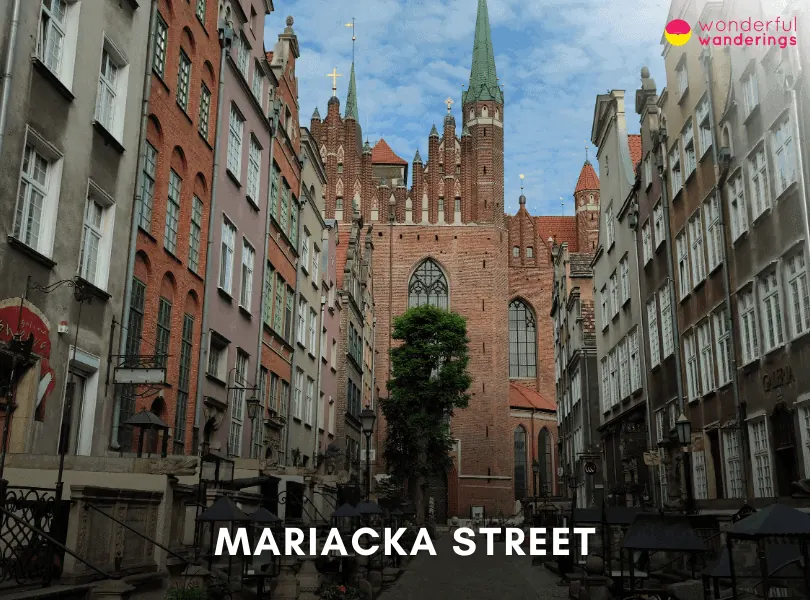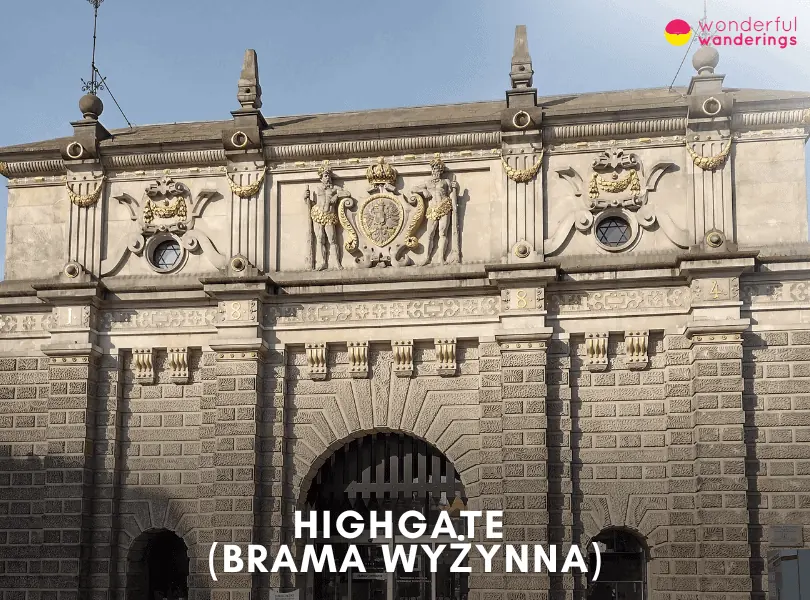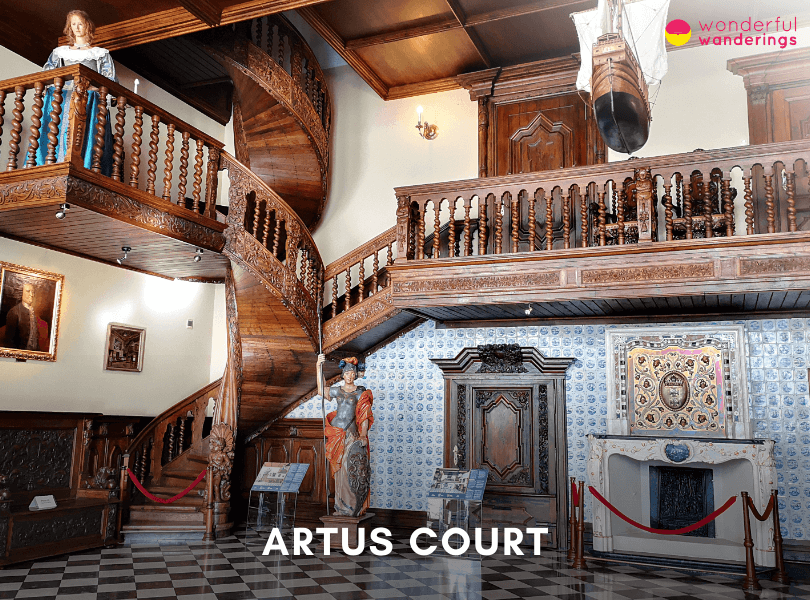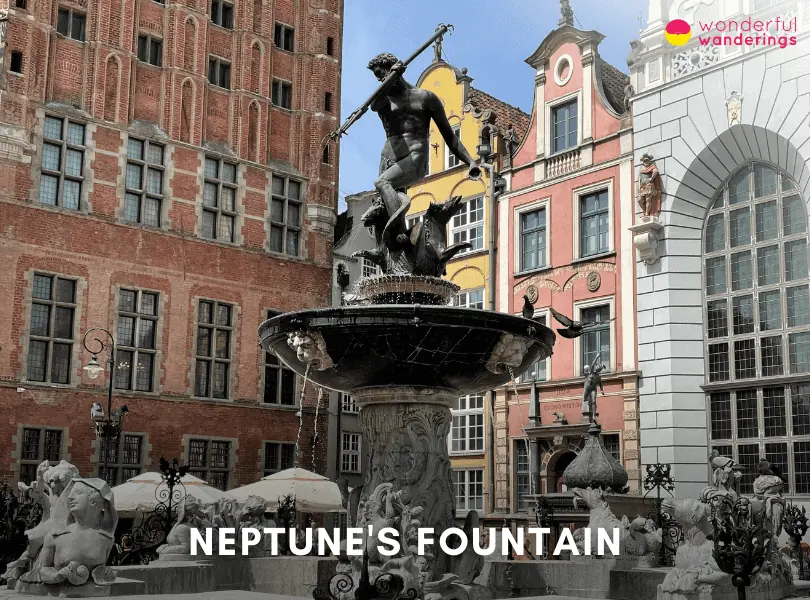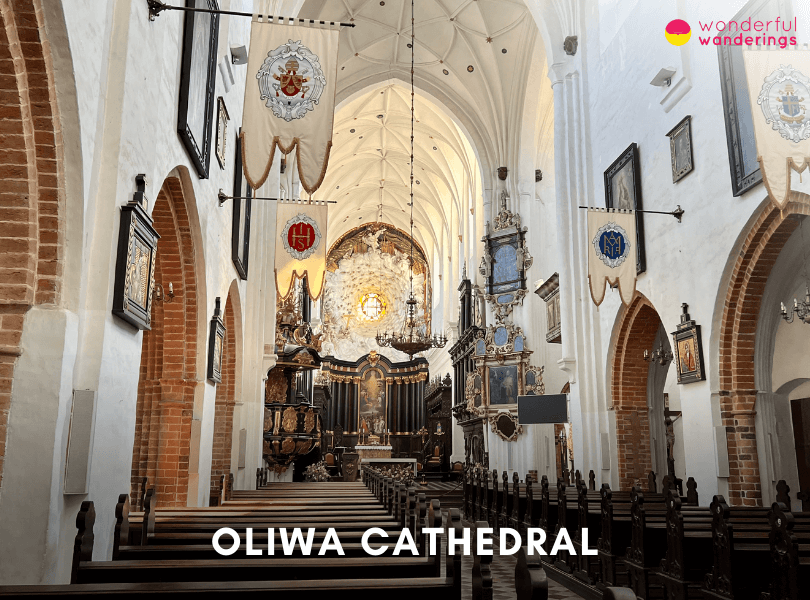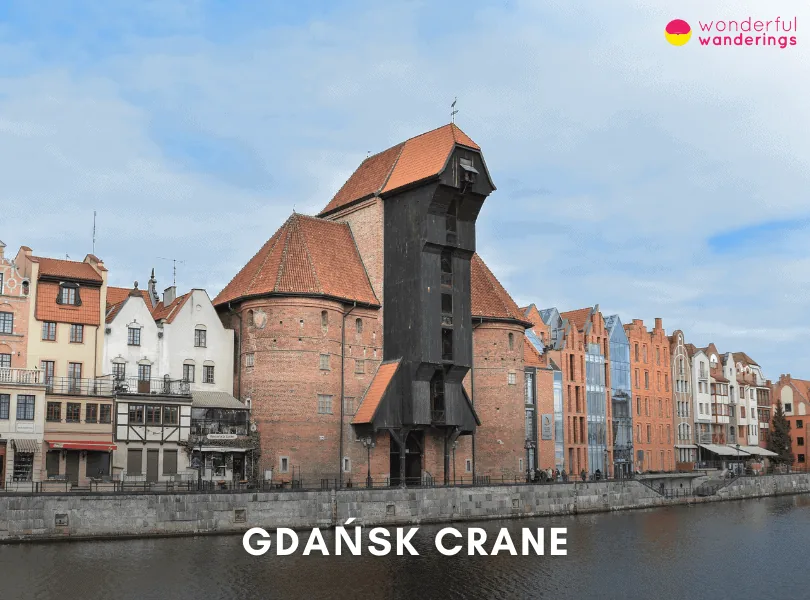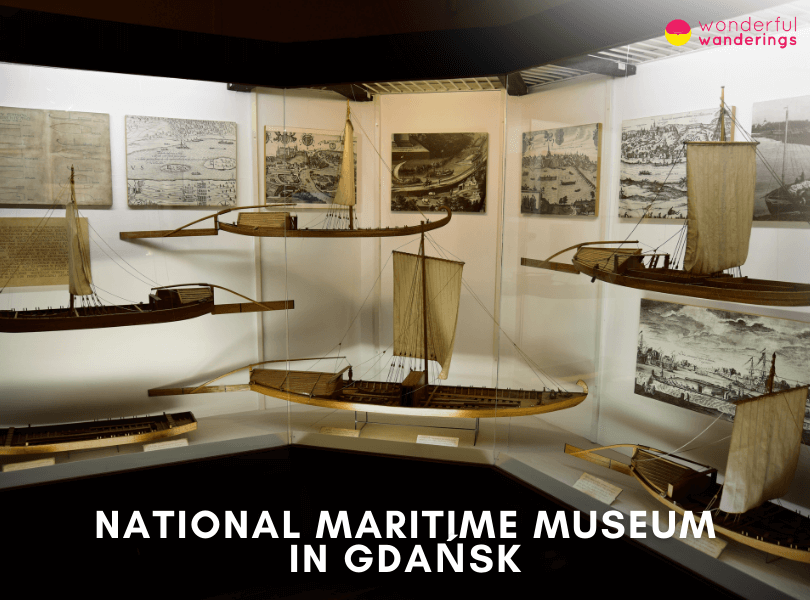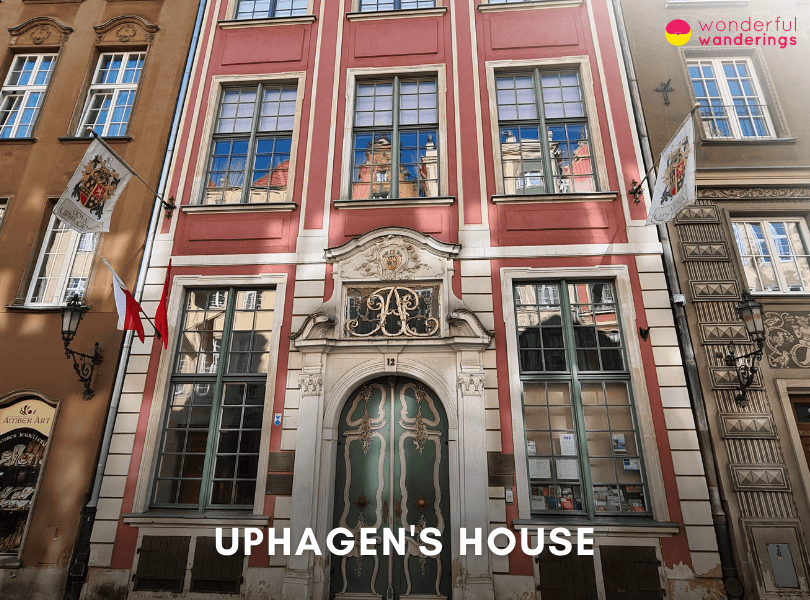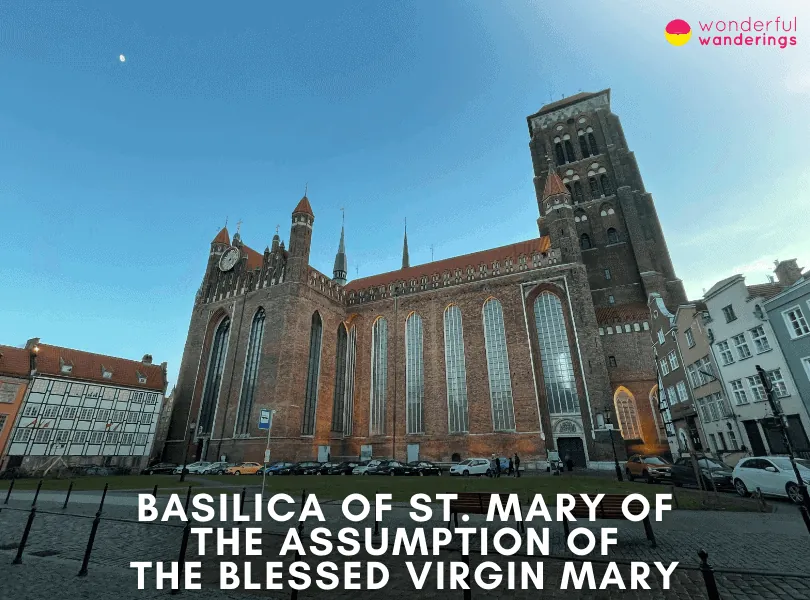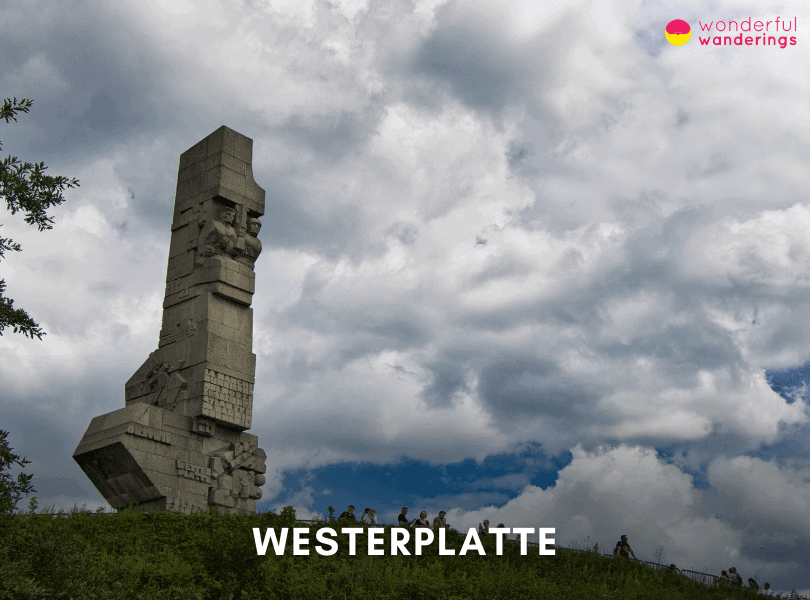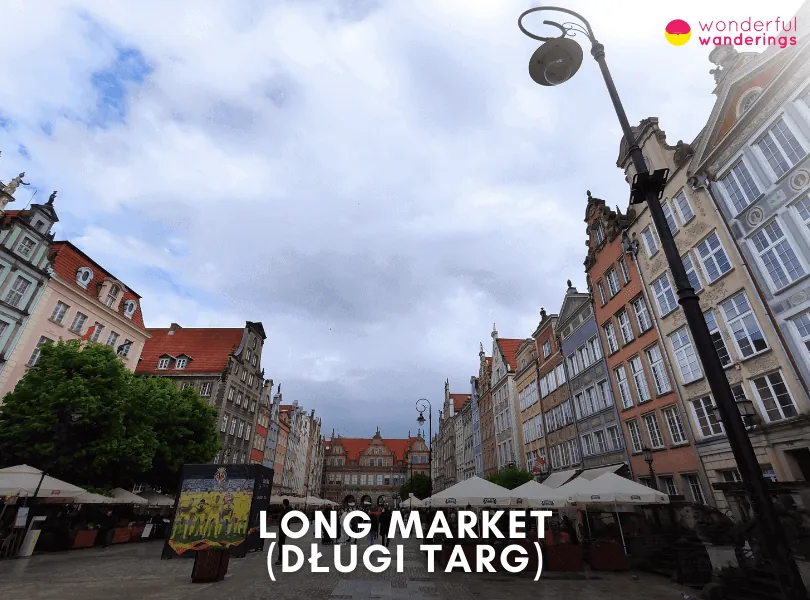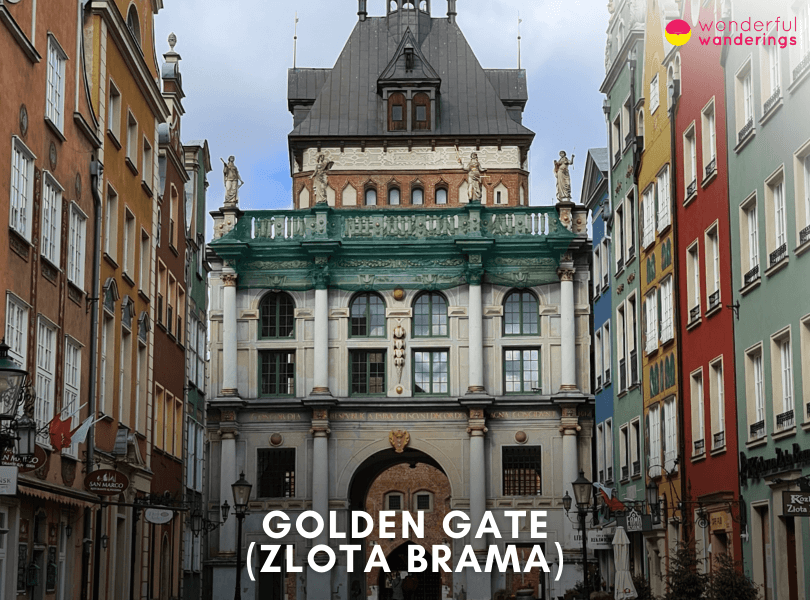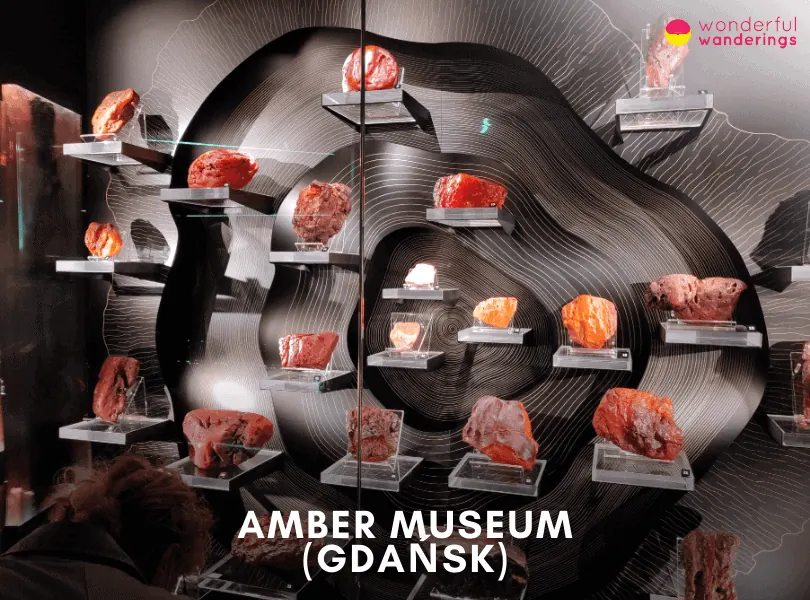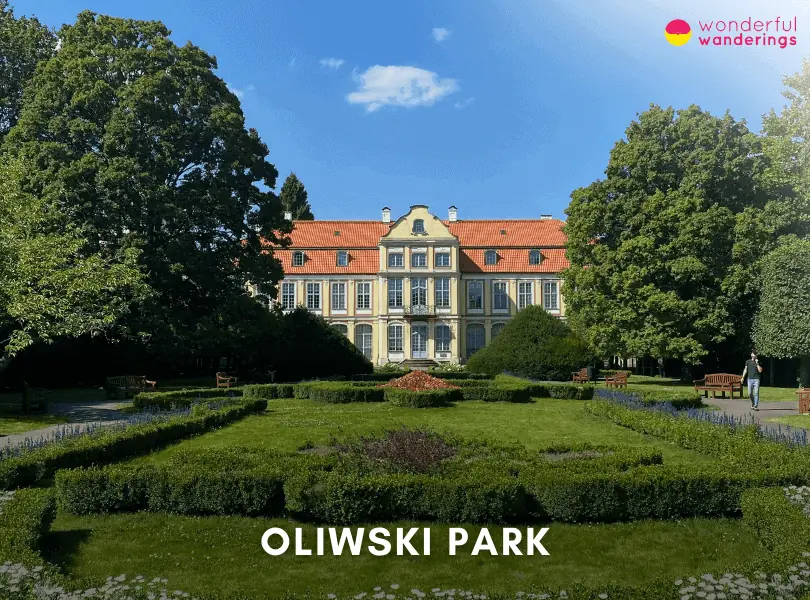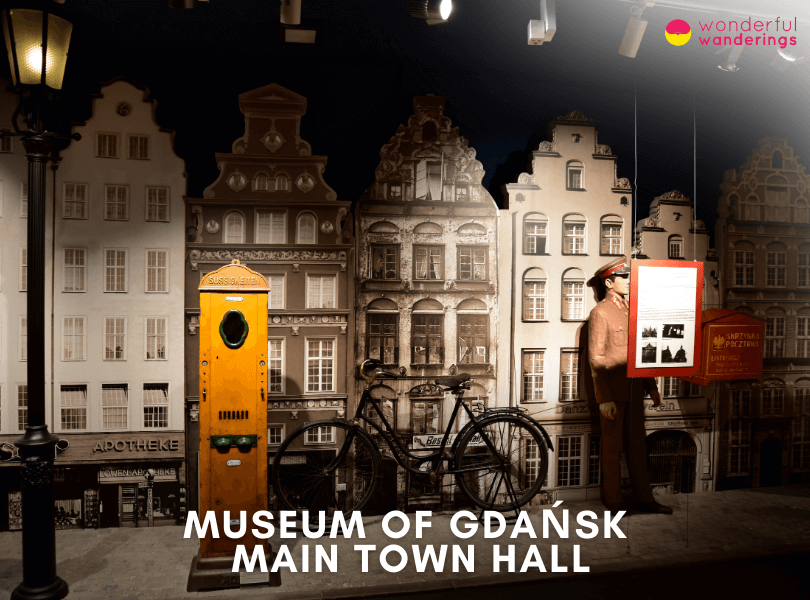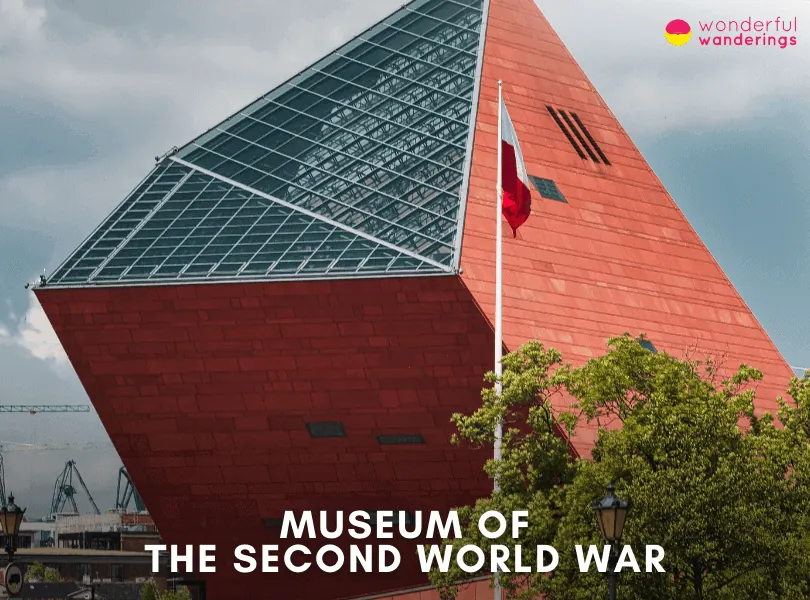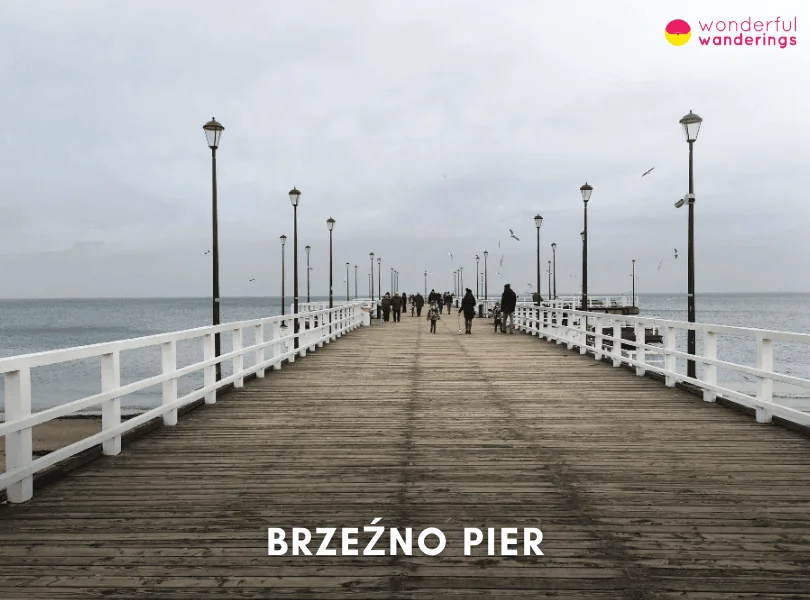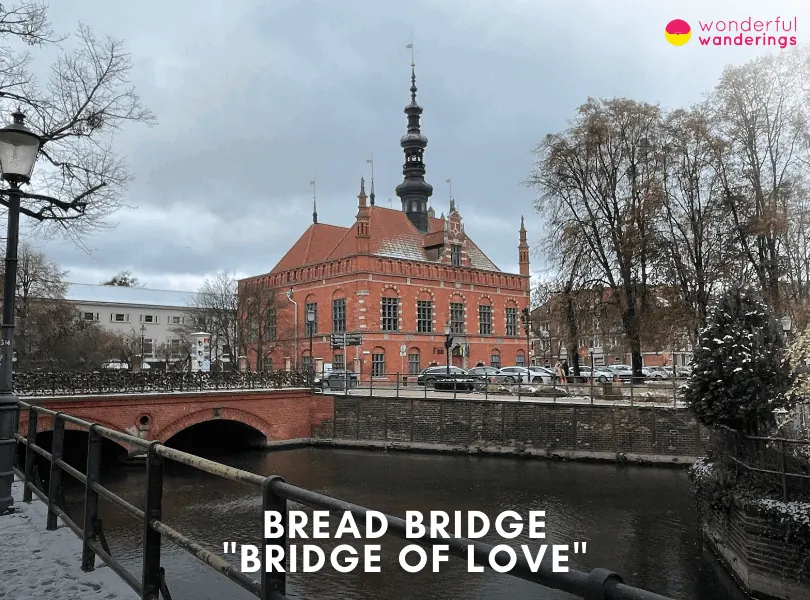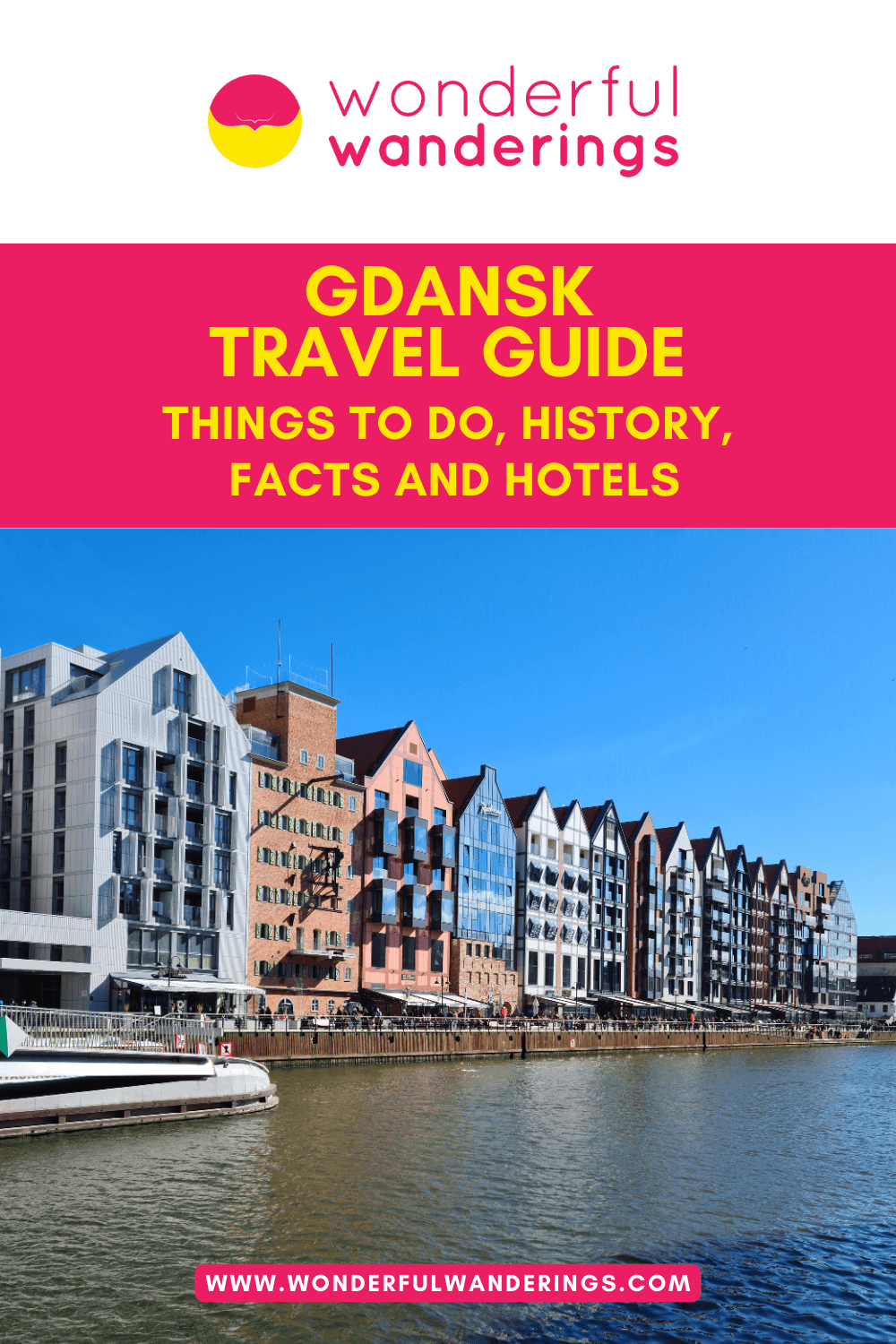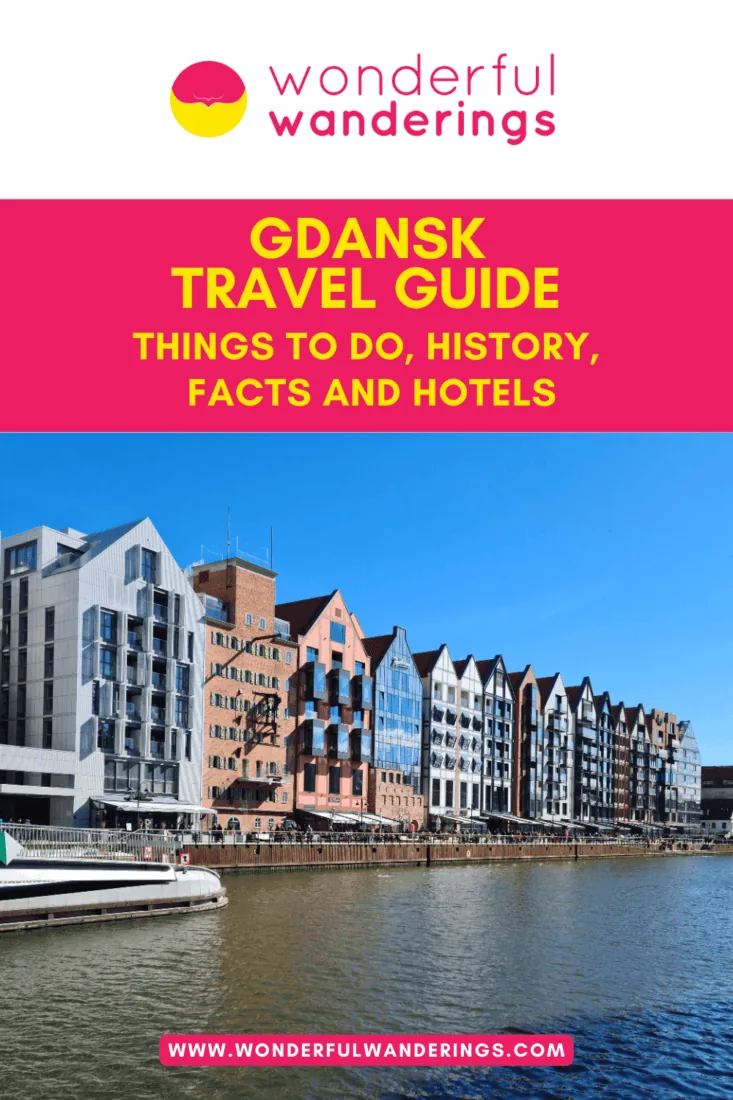Gdańsk is a major port city on the Baltic Sea coast in northern Poland. It is located at the mouth of the Motława River and lies in the Pomeranian Voivodeship, of which it is the capital and largest city. Gdańsk forms part of the Tricity metropolitan area and the nearby cities of Gdynia and Sopot. Gdańsk is in the Pomeranian Voivodeship, the province’s capital and largest city, with a population of 457,298 people as of 2023.
Gdańsk has a long history dating back to the 10th century when it was founded as a fishing village. It was part of the Duchy of Pomerelia before joining the Hanseatic League in 1361, which brought increased trade and prosperity. Gdańsk has endured various rulers over the centuries, from Polish kings to Prussian and German control and back to Poland in 1919 after WW1. Gdańsk was reincorporated into Poland after 1945. Gdańsk was the birthplace of the anti-communist Solidarność movement. Gdańsk has focused on rebuilding, attracting tourists and revitalizing its shipbuilding and maritime industries since the fall of communism.
Gdańsk offers visitors various attractions and activities to discover its complex history and culture as a medieval port city on the Baltic coast. Must-see sites include wandering the historic cobblestone streets of the Main Town to view landmarks like the towering St. Mary’s Church, Artus Court and Neptune’s Fountain. The iconic shipyard gates lead to the captivating European Solidarity Centre museum recounting the anti-communist movement born in Gdańsk. Visitors can admire views of spires and gabled roofs on a Motława River boat tour. The National Maritime Museum’s interactive displays showcase shipbuilding and deep sea artifacts. World War Two history comes alive at Westerplatte and the iconic medieval crane is still towering over the harbor. Sample Baltic amber jewelry and handicrafts between the quirky architecture lining Mariacka Street. Gdańsk rewards pedestrians roaming between Old World trading houses and dramatic churches infused with centuries of Portuguese, Dutch, French and Hanseatic German influences unique to Baltic culture. Gdańsk is in the Central European Time zone, UTC+1. It observes Central European Summer Time (UTC+2) when daylight savings is in effect from late March to late October each year.
Listed below are the things to do in Gdańsk.
- Gdańsk Old Town. Gdańsk Old Town is in northern Poland at the mouth of the Motława River. It was established in the 10th century and joined the Hanseatic League in the 14th century, increasing trade and prosperity. Gdańsk soon became one of the largest and wealthiest cities on the Baltic coast. The old town suffered enormous damage in WWII but was reconstructed. It is renowned for its spectacular medieval and Renaissance architecture along picturesque cobblestone streets. Highlights include the 15th-century Artus Court, St. Mary’s Basilica and the iconic Great Armoury building.
- European Solidarity Centre. The European Solidarity Centre (ESC) in Gdańsk, Poland, commemorates Solidarity, the independent trade union born out of worker strikes at the Gdańsk Shipyard in 1980. The ESC opened on the 34th anniversary of the Gdańsk Agreement in 2014. The main attraction is a permanent multimedia exhibition detailing Solidarity’s history across seven interactive halls using archival materials, documents, films and art installations. Other facilities include a library, media center, academic research facilities, conference rooms, a winter garden, shops and a restaurant.
- Mariacka Street. Mariacka Street is in Gdańsk’s Old Town neighborhood. It is lined with beautiful burgher houses dating back to the Renaissance and Baroque periods. The narrow cobblestone street feels like a step back. Highlights include admiring the decorated architecture, visiting amber jewelry shops, which Gdańsk is famous for and dining at cafes serving Polish fare. The street is also home to attractions like the Archaeological Museum in the Naturalists’ House.
- Highgate (Brama Wyżynna). The High Gate (Brama Wyżynna) is a Renaissance-style fortified gate built in 1574 and 1588 as part of Gdańsk’s city walls. Inside is a small tourist information center featuring ornately carved decorations and Latin inscriptions highlighting virtues. It features an automated procession of figures, including knights, ladies and the Polish king Jan III Sobieski, on horseback. The structure makes an impressive backdrop for photos.
- Artus Court. Artus Court was a meeting place for medieval Gdańsk’s elite merchants and an event venue. Featuring a magnificent interior with colorful ceiling depictions and enormous stoves, it also houses the Gdańsk History Museum, exhibiting artifacts through the ages. Visitors can admire the architecture and decor, learn about the city’s history and attend classical music concerts held in the Grand Hall.
- Neptune’s Fountain. Neptune’s Fountain in central Gdańsk dates to 1633. The Baroque fountain features a bronze statue of Neptune atop a richly decorated basin, representing the city’s maritime trade. The statue was hidden during WWII to save it from being melted by the Nazis. The restored granite fountain remains an atmospheric centerpiece along the historic Long Market, making an excellent photo backdrop.
- Oliwa Cathedral. Oliwa Cathedral was reconstructed from a Gothic monastery into an ornate Baroque-Rococo form after fires and wars. Home to the renowned Oliwa Pipe Organ with over 8,000 elaborately carved, gilded pipes, highlights include admiring the decor, attending frequent organ concerts and visiting the Diocesan Museum of treasures and artifacts.
- Gdańsk Crane. The iconic brick Gdańsk Crane functioned as a harbor loading crane and fortified city gate. Featuring circular towers, walls and elevated wooden machinery operated by men walking inside giant wheels, it could lift 2-tonne loads to 27 meters high. It is a branch of the National Maritime Museum and visitors can tour 17th-century port life exhibits and views from 25 meters up overlooking the Motława River.
1. Gdańsk Old Town
Gdańsk Old Town (Polish. Stare Miasto w Gdańsku) is located in the city of Gdańsk in northern Poland. Gdańsk is situated on the Baltic Sea coast, at the mouth of the Motława River. The exact address of Gdańsk Old Town is Długi Targ, Gdańsk, Poland. Gdańsk Old Town has a long and fascinating history. It was established in the 10th century when Gdańsk was founded by Mieszko I, Duke of Poland. In the 14th century, Gdańsk joined the Hanseatic League, an alliance of merchant guilds and market towns in Northern Europe. This brought increased trade and prosperity to the city. Gdańsk soon became one of the largest and wealthiest cities on the Baltic coast. It continued to thrive for centuries as an important port and trading hub. Gdańsk Old Town suffered enormous damage during World War II, over 90% of its buildings were destroyed. A meticulous reconstruction project was undertaken to rebuild the historic center to its former glory. The architecture and layout of the original buildings were recreated using old paintings and photographs as reference. The beautifully restored Gdańsk Old Town allows visitors to step back in time and glimpse the city’s storied past.
Gdańsk Old Town is renowned for its spectacular medieval and Renaissance architecture. Visitors can wander along picturesque cobblestone streets with ornately decorated burgher houses, Gothic churches and historic merchant townhouses. Architectural highlights include the 15th-century Artus Court, St. Mary’s Basilica (the largest brick church in the world) and the iconic Great Armoury building. There are many interesting things visitors can see and do in Gdańsk Old Town. A must-do activity is soaking in the atmosphere while strolling down Długi Targ (Long Market), the main thoroughfare dotted with beautiful historic buildings. Check out Neptune’s Fountain in the center of Długi Targ, a symbol of Gdańsk created in 1633. Foodies will enjoy sampling traditional Polish cuisine at one of the many restaurants, like the famed Pierogarnia Mandu, which specializes in dumplings. Popular river cruises along the Motława River offer unique vantage points to view Gdańsk’s architecture. Visitors interested in history can visit museums like the Gdańsk Museum of Amber to learn more about the city’s trading heritage. Shopping aficionados will love hunting for Baltic amber jewelry, ceramics, artworks and handicrafts at souvenir stalls and galleries. Gdańsk Old Town offers fun activities for visitors of all ages and interests.
Gdańsk Old Town is located in the city center and can be accessed on foot. It is easily reached by bus, tram, taxi or Uber. Visitors can also take the train from Gdańsk’s main train station, Gdańsk Główny and arrive at Gdańsk Śródmieście station. This train station sits on the edge of the Old Town. Entry to Gdańsk Old Town is free. Visitors only need to pay admission fees for certain attractions like museums or to go up the tower of St. Mary’s Basilica.
2. European Solidarity Centre
The European Solidarity Centre (ESC) is located in Gdańsk, Poland, at Plac Solidarności 1 (Solidarity Square 1). The ESC opened on August 31, 2014, on the 34th anniversary of the signing of the Gdańsk Agreement, which led to the creation of Solidarity, the first independent trade union in the Communist bloc. The ESC was established to commemorate and promote the ideals of the Solidarity movement, which began with worker strikes at the Gdańsk Shipyard in 1980. Led by electrician Lech Wałęsa, Solidarity grew into a mass social movement that contributed to the eventual fall of communism in Poland and across Eastern Europe. The design of the ESC building, with its rust-colored steel walls, is meant to evoke ships under construction at the Gdańsk Shipyard. The 5-story structure contains over 25,000 square meters of space, including a permanent exhibition, temporary exhibition halls, a multimedia library, archives, conference rooms, a winter garden, shops and a restaurant.
The main attraction at the ESC is the permanent exhibition detailing the history of Solidarity. Spread over seven halls on two floors, the interactive multimedia exhibition utilizes archival materials, documents, photos, films and art installations to immerse visitors in the story of the Solidarity movement. Key items on display include the original 21 demands written by striking workers in 1980, the overhead crane operated by Solidarity activist Anna Walentynowicz, a bullet-pierced jacket from a victim of the 1970 shipyard massacre and the desk of opposition leader Jacek Kuroń. The exhibit walks through major events like the August 1980 strikes, the declaration of martial law in 1981 and Poland’s transition to democracy in 1989. The permanent exhibition best suits adults and high school/college students interested in Solidarity and Poland’s modern history. Audio guides are available in 11 languages. Visitors should plan on spending at least 2 hours exploring the multimedia exhibit. Other facilities at the ESC include a library with over 100,000 books, a media center, academic research facilities, conference rooms, a winter garden that hosts cultural events and a restaurant and shops on the ground floor. The ESC also has a children’s play area called the Play Department.
The ESC can be reached by public transportation, taxi, bike or car. The nearest tram stop is Solidarności. The building has an underground parking garage accessible from ul. Stągiewna. Admission to the permanent exhibition costs 30 PLN ($7, 6€, 4£). Discounts are available for students, seniors 60+ and families. Access to the building and winter garden is free. Temporary exhibitions usually cost extra.
3. Mariacka Street
Mariacka Street is located in the Old Town neighborhood of Gdańsk, Poland. Gdańsk is a port city on the Baltic Sea coast in northern Poland. Mariacka Street has existed since the 14th century. It was originally known as “Our Lady’s Street” in Latin, referring to the nearby St. Mary’s Basilica. In the Middle Ages, Mariacka Street was home to shoemaking workshops. Gothic tenement houses were built along the street from the late 15th century onward. Mariacka Street is special because of its well-preserved historic architecture and atmosphere. The street is lined with beautiful burgher houses that date back to the Renaissance and Baroque periods. Many houses have decorative terraces and porches protruding over the narrow cobblestone street. Carvings and engravings of religious and mythological scenes adorn the facades. Mariacka Street was destroyed by bombing raids in 1945. A meticulous reconstruction was undertaken between the 1950s and 1970s to restore the street. Mariacka Street feels like a step back in time, allowing visitors to experience the historic charm of Gdańsk.
There are several things visitors can do on Mariacka Street. Wandering along the cobbled lane and admiring the architecture is a must. Visitors can also check out the many amber jewelry shops, as Gdańsk is famous for its amber. Foodies will enjoy the numerous cafes serving Polish fare. The street is also home to art galleries and museums like the Archaeological Museum in the Naturalists’ House at no. 25/26. Mariacka Street would appeal most to history and architecture enthusiasts, as learning about its medieval origins and reconstructed buildings is fascinating. It is also a good activity for families with older children who can appreciate the historic surroundings. Photography enthusiasts will find the picturesque streetscapes dotted with gargoyles and ornamentation very photogenic.
Gdańsk is accessible by train, bus or car. Mariacka Street is located in the heart of the Old Town, making it accessible from most accommodations. Public transport like trams and buses can also bring visitors to stops near Mariacka Street from different parts of Gdańsk. Entry along Mariacka Street is free, though individual attractions may charge admission fees ranging from 10 to 20 PLN ($2, 2€, 1£) to ($4, 4€, 2£).
4. Highgate (Brama Wyżynna)
The High Gate, known in Polish as Brama Wyżynna, is located in Gdańsk, Poland at Wały Jagiellońskie Street 2A. The Renaissance-style gate was built between 1574 and 1588 as part of the city’s new fortifications. It was designed by architect Willem van den Blocke and served as the main entrance to Gdańsk, opening onto the Royal Route into the city. For almost 300 years until 1878, the High Gate remained part of a larger fortified complex with walls, bastions and a moat. Today, the free-standing gate is a historic landmark in the city. The structure features ornately carved sandstone decorations on the facade, with three coats of arms above the arched passageways – the Polish eagle in the center, the Gdańsk coat on the right and the Royal Prussian coat of arms on the left. The building has two floors, with four lion statues standing guard atop the gate. Latin inscriptions on the walls highlight virtues like justice, piety, peace and wisdom.
Inside the gate is a tourist information center run by the Gdańsk History Museum. Visitors can stop by to learn about the gate’s history, pick up maps and brochures or ask the staff questions about attractions in the city. The small space inside also hosts temporary exhibits related to Gdańsk’s history. Outside the High Gate, visitors can admire the historic building from the street Wały Jagiellońskie. The structure makes for an impressive photo backdrop. On the hour, an automated procession of figures emerges from the gate, including knights, ladies and the Polish king Jan III Sobieski on horseback. Tour groups often gather to watch the spectacle.
The gate is ideally suited for adults interested in architecture, history and photography. The automated procession draws interest from visitors of all ages. Getting close to the gate can be difficult for those in wheelchairs or with limited mobility, as some stairs and cobblestones lead up to the entrance.
The High Gate is located in Gdańsk’s Main Town area, near the Gdańsk Główny train station. It can be reached by local tram (stop Brama Wyżynna), city buses and taxis. Tourists staying in the Old Town area can easily walk. There is some metered parking nearby. Entry to see the small interior exhibits costs 5 PLN ($1, 1€, 0.86£) per person. Access to the street and external facade is free. The tourist information center inside provides free maps and guidance. Guided walking tours in Gdańsk often include a stop at the High Gate to talk about its history and architectural significance.
5. Artus Court
The Artus Court (Polish. Dwór Artusa) is located at Długi Targ 43/44 in Gdańsk, Poland. Gdańsk is a port city on the Baltic coast in northern Poland. The Artus Court has a long and illustrious history. It was constructed between 1348 and 1350 as a meeting place for merchants and a center of social life for the elite members of the city. It was named after the legendary King Arthur and the Knights of the Round Table, as medieval merchants saw themselves as nobles and knights. In its heyday during the 16th and 17th centuries, the court hosted lavish balls, weddings and other events for wealthy citizens and visiting dignitaries. Artus Court features its magnificent interior decor. The Grand Hall features a colorful ceiling from 1617 depicting wildlife hunting scenes. The high walls are adorned with enormous 19th-century Gdańsk-style stoves decorated with biblical reliefs. Displays include precious 16th-century majolica pottery, gold jewelry and goblets for ceremonial occasions. The building also houses the Gdańsk History Museum, exhibiting historical artifacts of the city through the ages.
Visitors to the Artus Court today can admire the ornate architecture and decor, learn about Gdańsk’s history in the museum and attend classical music concerts held in the Grand Hall. Guided tours can allow visitors to view the main halls and take in detailed explanations from knowledgeable guides. The court also houses an upscale restaurant serving traditional Polish cuisine if visitors wish to take a culinary journey into history. The Artus Court appeals most to history enthusiasts interested in learning about Gdańsk’s prosperous past as a medieval trade city. Architecture buffs who can admire the excellent craftsmanship of the interior design. Foodies who want to complete the historical immersion by sampling dishes from a bygone era and classical music lovers, as concerts with musicians dressed in period costumes often occur.
The Artus Court is located in the Main Town of Gdańsk, making it very walkable from most accommodations, shops and restaurants in the historic center. It can be reached in 1.6 kilometers (0.9 miles) from Gdańsk Główny train station by local bus, tram or taxi. Entry tickets to the interior of the Artus Court cost 12 PLN ($3, 3€, 1£). Visitors can pay extra for a guided tour and/or a meal at the onsite restaurant. The building exterior can be viewed for free.
6. Neptune’s Fountain
Neptune’s Fountain (Fontanna Neptuna) is in the heart of Gdańsk’s Main Town at Długi Targ 43/44 (Long Market 43/44). It is along the city’s historic Royal Route and the fountain has stood in the center of Long Market since 1633. The Baroque fountain features a bronze statue of Neptune, the Roman god of the sea, standing atop a richly decorated basin. The powerful figure represents Gdańsk’s long connection to shipping and maritime trade. The statue was designed in 1617 by architect Abraham van den Blocke and sculpted by Flemish artist Peter Husen using 8 tonnes of bronze. The unique Gdańsk liquor Goldwasser (Goldwater) was born at Neptune’s Fountain. When Neptune struck the water with his trident, gold flakes from passing merchant ships spilled into the basin and mixed with the fountain’s waters, thus creating the famous drink with floating gold specks. Neptune’s Fountain has endured a turbulent history. The original 17th-century fountain was pulled down in 1836 with plans for something grander, but construction stalled. A simpler temporary plaster version was erected, which survived until WWII. The Nazi occupation regime planned to melt the bronze statue for armaments, but Polish resistance fighters hid the figure. A new granite fountain was rebuilt in 1954 using the original Neptune statue.
Visitors gather around the restored fountain to admire the detailed sculpture and flowing water. The striking centerpiece adds old-world charm to the atmospheric Long Market, lined with colorful historic townhouses. Tour groups often pause here while guides recount Gdańsk’s maritime heyday when ships laden with goods docked along the Motława River. The fountain makes an excellent photo backdrop, especially when illuminated at night. Visitors can get up close to inspect the god Neptune wielding his trident. The four female figures at the base represent major rivers associated with Gdańsk – the Vistula, Oder, Elbe and Rhine. Intricate reliefs decorate the granite basin. Neptune’s Fountain appeals to visitors of all ages interested in art, architecture, history and photography. Families enjoy the impressive statue and flowing water. It also draws shoppers and diners to visit Long Market’s restaurants and amber shops.
The fountain is in central Main Town, near Gdańsk Główny train station. It can be reached via tram line #2 or #3 to Brama Wyżynna or various buses to Długi Targ. Limited paid street parking is available nearby. Entry to admire and photograph the fountain is free. Neptune’s Fountain is outdoors and always open. Occasional public events like concerts may restrict direct access. Guided walking tours of Main Town often stop here to talk about Gdańsk’s maritime history.
7. Oliwa Cathedral
The Oliwa Cathedral (Polish. Katedra Oliwska) is located at ul. Nowolipie 1, 80-330 Gdańsk, Poland. Gdańsk is a port city on the Baltic Sea coast in northern Poland. The Oliwa Cathedral has a long and fascinating history dating back to the 12th century when it was founded as part of a Cistercian monastery. Fires and wars led to the reconstruction of the Gothic-style cathedral into its present form with exceptional Baroque and Rococo interior decor. Oliwa Cathedral highlights the ornate architectural details and works of art. The centerpiece is the massive Oliwa Pipe Organ, constructed between 1763 and 1788 and renowned as one of the largest and most complex organs in the world. The intricately carved, gilded organ has over 8,000 pipes and is decorated with hand-carved figures of angels, suns and stars. The cathedral also contains many altars, paintings, sculptures and tombstones of great artistic value.
Visitors today can admire the cathedral’s architecture and art, attend organ music concerts held regularly and visit the Diocesan Museum to see historical artifacts and treasures. Guided tours are available to view the impressive pipe organ and learn more about the cathedral’s history. There is also a restaurant on-site if visitors wish to dine. The Oliwa Cathedral appeals most to classical music lovers, especially organ music lovers, as concerts occur frequently. History and architecture enthusiasts are interested in the cathedral’s Medieval origins and Baroque-Rococo reconstruction. Art aficionados who can appreciate the altars, paintings and sculptures. Photography enthusiasts, due to the striking interior and organ views.
The Oliwa Cathedral is located in the Gdańsk district of Oliwa, 5 kilometers (3.1 miles) by car or bus from central Gdańsk. Public bus #122 runs frequently from Gdańsk’s main train station (Gdańsk Główny) and stops close to the cathedral. Taxis are also available. Entry to see the cathedral interior costs 8 PLN (2€, $2, 1£) per person. Additional fees apply for photography permits, guided tours, organ recitals and the onsite Diocesan Museum. Visitors can also dine at the cathedral’s restaurant or purchase souvenirs from a gift shop.
8. Gdańsk Crane
The Gdańsk Crane, known in Polish as Żuraw Gdański, is located in central Gdańsk at Szeroka Street 67/68 along the Motława River. The spectacular Gothic brick structure was built between 1442 and 1444, with an ornately decorated west facade added in 1483. It functioned as a harbor crane for loading goods and a fortified city gate, featuring two circular towers connected by walls and wooden crane machinery in an elevated central section. The Gdańsk Crane could lift loads to 2 tonnes using rope wound around two huge wooden treadwheels, each over 6 meters in diameter. The wheels were powered by men walking inside, enabling the crane to lift cargo from ships on the Motława River up to 27 meters high. The building has defensive features like cannon ports, gun loops and high towers to provide a lookout and protection. It served as an entrance to the city from the harbor. The brick construction and soaring height made it a prominent landmark.
The iconic Gdańsk Crane is a branch of Poland’s National Maritime Museum. Visitors can tour exhibits that recreate 17th-century port life, including models of ships, counting houses, granaries and the huge internal wooden gears that operated the crane. The top floor offers excellent views from 25 meters up, overlooking the Motława River and historic harbor. Seeing the massive wooden machinery also gives an appreciation for early lifting technology.
The crane appeals to adults and older children interested in medieval architecture, port history, engineering and photography. The building’s narrow spaces and steep stairs make it unsuitable for those with mobility limitations.
The Gdańsk Crane is located in the Main Town area of the city, near the Gdańsk Główny train station. Visitors can take local tram #2 or #3 to the Brama Wyżynna stop or city buses that stop along Długie Pobrzeże. Limited paid street parking is available nearby. Entry to the museum exhibits costs 10 PLN ($2, 2€, 1£) per person. Access to the building exterior and views from Long Embankment are free. Guided walking tours of Gdańsk often stop here to discuss the crane’s history and operation.
9. National Maritime Museum in Gdańsk
The National Maritime Museum in Gdańsk (Polish. Narodowe Muzeum Morskie w Gdańsku) is located at Ołowianka 9-13, 80-751 Gdańsk, Poland. Gdańsk is a port city on the Baltic Sea coast in northern Poland. The museum has a long history dating back to 1958 when a Museum’s Friends Association was established to create a maritime museum in Gdańsk. It was officially opened on January 1, 1962 and has expanded over the years to encompass several branches across northern Poland. Today, the museum’s main branch is housed in the meticulously restored medieval granaries on Ołowianka Island in central Gdańsk.
The National Maritime Museum has an extensive collection of Poland’s maritime history and culture over the centuries. The museum holds over 28,000 artifacts, including model ships, naval artillery, ethnographic objects, works of art and archaeological materials recovered from underwater excavations. The granaries contain interactive displays depicting shipbuilding techniques, famous naval battles, artifacts from sunken galleons and Polish maritime exploration around the world. Visitors can explore several permanent exhibitions and temporary displays in the granaries and maritime culture center. Guided tours of the museum ships SS Sołdek and Dar Pomorza are available, bringing history to life by allowing access to these vessels’ interior spaces and equipment. The museum also houses conservation workshops, where visitors can observe archaeological preservation. The National Maritime Museum appeals most to Maritime history enthusiasts interested in Poland’s naval past. Nautical archaeology fans can view conserved artifacts firsthand. Ocean exploration aficionados who were eager to learn about Polish maritime exploits and families with children over five who could engage with the interactive shipbuilding exhibits.
The museum’s main branch on Ołowianka Island is located in central Gdańsk, near the Gdańsk Główny train station. It can also be reached by local tram or bus. Entry to the permanent exhibitions at the National Maritime Museum costs 18 PLN ($4, 4€, 2£) for adult tickets and 12 PLN ($3, 3€, 1£) for concessions. Extra fees apply for special exhibitions, museum ships and guided tours. Visitors can also purchase combined tickets for 28 PLN ($8, 7€, 4£) to access all branches by ferry and see the full maritime experience.
10. Uphagen’s House
Uphagen’s House (Dom Uphagena) is in central Gdańsk at Długa Street 12 ( within the historic Main Town area. The house was purchased in 1775 by Johann Uphagen, a wealthy merchant, historian, art collector and city councilor. Johan Uphagen had it extensively remodeled in an 18th-century patrician residence style to suit his status. After Uphagen died in 1802, the house stayed in his family for generations. It was converted into a museum in 1991, showing the historic interiors and furnishings of a Gdańsk merchant’s home. It functioned as a museum until 1944, when the contents were evacuated and hidden away by German curators. The house itself was destroyed in 1945 during the Soviet capture of Danzig. After the war, the exterior was reconstructed by 1954, but the museum did not reopen until 1998 after extensive restoration.
Visitors to Uphagen’s House can tour period rooms that recreate the ambiance of an 18th-century Gdańsk merchant residence. The elaborate interiors reflect the immense wealth flowing through the port city during its heyday in the Hanseatic League. Highlights include the tall Entry Hall with stucco details, the Chinese-themed Tea Room, the extravagant main Drawing Room with mythological wall panels and damask fabrics, the ornate gold-leafed ceiling of the Dining Room and the Music Room with bird motifs. The house also contains some original furnishings and a display of kitchen equipment. Temporary exhibits are housed on the 2nd floor in former bedrooms. There is a small gift shop in the old merchant’s office. Uphagen’s House appeals primarily to adults interested in local history, historic architecture and decorative arts. Visitors should allow at least an hour to view the main rooms and exhibits. The building’s historic design makes accessibility challenging for some.
Visitors can take tram #2 from the station to the Brama Wyżynna stop or buses that stop along Długie Pobrzeże. Limited paid street parking is available nearby. Entry to see the museum exhibits costs 12 PLN ($3, 3€, 1£). Discounts are available for students and seniors. The interior rooms are only accessible by guided tour. The gift shop and exterior of the house can be viewed independently.
11. Basilica of St. Mary of the Assumption of the Blessed Virgin Mary in Gdańsk
The Basilica of St. Mary of the Assumption of the Blessed Virgin Mary, also known as St. Mary’s Church (Polish. Bazylika Mariacka), is located in central Gdańsk, Poland, at Podkramarska 5, 80-834 Gdańsk. St. Mary’s has a long and fascinating history dating back to the 14th century when construction began on the Gothic brick church. St. Mary’s was expanded and various architectural elements were added in the Renaissance and Mannerist styles. It has endured fires, wars, destruction and meticulous reconstruction to stand today as one of the largest brick churches in the world.
St. Mary’s is special because of its immense size and spectacular interior decor, with a volume between 185,000 and 190,000 m3. Its grandeur rivals that of great cathedrals. The 105.5-meter-long, 66-meter-wide interior impresses with its soaring pillars, elaborate 17th-century pipe organ, 15th-century astronomical clock and immense Golden Chapel containing ornate sarcophagi. The church holds about 25,000 people and was elevated to a minor basilica in 1965. Visitors to St. Mary’s today can admire the architectural height and scale of the church, view the many artworks inside, including the famous Last Judgement painting by Herman Han and attend organ music concerts when held. It is also possible to take an elevator up the 75-meter tall tower for panoramic views across Gdańsk. St. Mary’s appeals to history enthusiasts interested in church origins dating to medieval times. Architecture buffs who can appreciate the brick Gothic and mannerist styles. Art aficionados keen to see The Last Judgement and other work and music lovers who may chance upon one of the occasional concerts
St. Mary’s is centrally located in downtown Gdańsk, 0.3 kilometers (0.1 miles) from the Gdańsk Główny train station. It can also be reached by local tram, bus or taxi. Entry to admire the church interior is free. There are small admission fees to access extras like the tower elevator ride (5 PLN) ($1, 1€, 0.86£) or occasional special exhibitions. Guided tours for 120 PLN ($29, 26€, 23£) per group may also be booked.
12. Westerplatte
Westerplatte is located in Gdańsk, Poland, at Mjr. Henryka Sucharskiego Street 25 within the former Westerplatte Peninsula. It was the location of the Battle of Westerplatte, the first clash between Polish and German forces in World War II. Westerplatte has a long military history. In the mid-16th century, a fort was built here to defend Gdańsk. In 1925, under the terms of the Treaty of Versailles, Poland was allowed to maintain a small military transit depot on the Westerplatte Peninsula, which was still German territory at that point. On September 1, 1939, Germany attacked the depot, beginning the invasion of Poland. Polish defenders (182) held off over 3,000 German troops for seven days in a symbolic stand.
Westerplatte is preserved as a war memorial and museum. The ruins of the barracks, guardhouses and other military structures stand as haunting reminders of the 1939 battle. The landscape is dotted with memorials like the Monument to the Coast Defenders, a 25-meter tall granite obelisk and a cemetery for the Polish soldiers killed in action. An on-site museum documents the battle. Visitors can walk along the marked sightseeing path to the ruins and memorial sites. The Westerplatte memorial appeals most to adults and older youth interested in World War II and Polish history. Seeing the remains of the bombed-out buildings and military fortifications brings the 1939 battle to life. The museum’s photos, documents and exhibits add important context. Those interested in military strategy may appreciate analyzing battlefield tactics.
Westerplatte can be accessed by car, public transit or tour bus, with limited parking available. By public transport, visitors can take tram #2 or #3 from downtown Gdańsk to the Przystanek Muzeum stop and then walk to the museum. The memorial grounds are open year-round. Entry to the Westerplatte Museum cost 10 PLN (2€, $2, 1£) per person. Access to the outdoor memorial park is free. Guided tour options of the battleground are available during the summer. Those staying in Gdańsk’s Main Town can also reach Westerplatte by riverboat.
13. Long Market (Długi Targ)
Long Market, known in Polish as Długi Targ, is located in the heart of Gdańsk’s Main Town between the Long Lane (Ulica Długa) and Green Gate (Brama Zielona) at Długi Targ 43/44 Długi Targ was initially a merchant road leading to an oval marketplace. After the 1308 massacre of Gdańsk citizens by the Teutonic Knights, it became the city’s main thoroughfare. Its official Latin name, “Longa Platea”, was first written in 1331, with the Polish name “Ulica Długa” introduced in 1552. Długi Targ is lined with colorful historic townhouses reconstructed decades after World War II. The buildings feature distinctive architectural styles from Dutch Renaissance to French and Flemish Baroque. Intricate stonework decorates many facades, such as the Golden House’s 12 carved biblical scenes.
Długi Targ is home to several iconic landmarks. In the center is the Neptune Fountain, featuring a 1633 statue of the Roman sea god standing atop a richly decorated basin. The fountain pays homage to Gdańsk’s long connection to shipping and trade. Behind Neptune’s Fountain is the 15th-century Artus Court, which once served as a meeting place for wealthy merchants and now houses a museum. The iconic 1487 Golden Gate sits at the western end, a remnant of the city’s medieval fortifications. The Main Town Hall’s green and white 16th-century towers are also along Długi Targ. Długi Targ bustles with tourists, shoppers and diners patronizing its many restaurants, cafes and amber shops. Visitors stroll down the atmospheric lane to admire the striking architecture and landmarks. The Long Market is an excellent photo backdrop, especially at dusk when the buildings glow under golden light. The promenade appeals to all visitors interested in architecture, history, photography, shopping and dining. Landmarks like Neptune’s Fountain also attract families. Sections of Długi Targ are close to vehicle traffic, making it ideal for pedestrians. Guided walking tours of Gdańsk often pause here to discuss the history.
Długi Targ is located in Main Town, near Gdańsk Główny train station. Visitors can take tram #2 from the station to Brama Wyżynna stop or local buses. Limited paid street parking is available nearby. Entry to walk Długi Targ and admire its landmarks is free. Museums like Artus Court charge admission around 12 PLN ($3, 3€, 1£) per person. There are no entry fees for the shops, cafes and restaurants lining the atmospheric promenade.
14. Golden Gate (Zlota Brama)
The Golden Gate (Polish. Złota Brama) is at the end of Długa Street in the Old Town area of Gdańsk, Poland. Gdańsk is a port city on the Baltic Sea coast in northern Poland. The Golden Gate has a long history from the early 17th century. It was constructed between 1612 and 1614 by architect Abraham van den Blocke and builder Jan Strakowski to replace an older 13th-century Gothic gate on the same site. Its location connects the historic Long Market (Długi Targ) to Long Lane (Ulica Długa), once the Royal Route into Gdańsk.
Golden Gate features its ornate Renaissance-style architecture and extensive decorative sculpture work. It is a testament to Gdańsk’s prosperity as a trading center in the 1600s. The light sandstone facade combines Dutch and Italian influences with four pairs of Doric and Ionic columns across two stories framing an arched passageway. Intricate masonry and abundant ornamentation give it grandeur. Figurative stone sculptures representing civic virtues like peace, Concord and Prudence adorn the attic story. Visitors to the Golden Gate today can admire its historic architecture, stroll through the passageway from Long Lane onto the Long Market main avenue and view the sculpture work up close. Interpretive signs detail the gate’s history and symbolism for self-guided learning. The atmospheric side street and the square also have restaurants, cafes and shops to enjoy. The Golden Gate would appeal to history enthusiasts interested in Gdańsk’s trading heyday. Architecture buffs who can appreciate the Dutch Mannerist style. Art aficionados keen on symbolic sculpture work and photographers and tourists seeking an iconic city photo spot
The Golden Gate is centrally located in Gdańsk’s touristy Old Town area, quite walkable from most accommodations, shops and restaurants nearby. It can be reached through the Gdańsk Główny train station by local tram, bus or taxi. Entry to view the Golden Gate from both sides and pass through the walkway is free. Some restaurants and shops adjoin the small square around it. Guided walking tours of Gdańsk often pass by it as a highlight attraction to explain further.
15. Amber Museum (Gdańsk)
The Amber Museum (Polish. Muzeum Bursztynu) is located at Targ Węglowy 26, 80-836 Gdańsk, Poland. Gdańsk is a port city on the Baltic Sea coast in northern Poland. The Amber Museum has a history dating back to 2006 when it opened as a branch of the Gdańsk History Museum, housed in the historic Foregate complex on Długa Street. This complex consists of the Torture House, Neck Prison Tower and Prison Tower, dating back to the 14th century. The Amber Museum was Poland’s first museum devoted exclusively to amber.
Amber Museum displays one of the largest amber collections in the world, allowing visitors to explore the unique history and artistry surrounding this fossilized tree resin. Exhibits showcase raw amber specimens, inclusions (plant and animal material trapped inside amber), historical artworks from Gdańsk and contemporary amber art and jewelry. Multimedia presentations explain how amber formed millions of years ago, methods for extracting amber, its uses in medicine and magic and more. The museum also exhibits paintings, graphics, sculptures and installations by artists who use amber as an artistic medium. Visitors to the Amber Museum can admire the diverse amber exhibits, learn about amber through multimedia displays and attend demonstrations of amber working techniques. There is also a gift shop selling jewelry and souvenirs. Special exhibitions and cultural events are held periodically as well. The Amber Museum appeals to geology and natural history enthusiasts interested in amber formation. Art lovers who can appreciate historic and contemporary amber artworks. Jewelry aficionados are keen to see exquisite amber adornments and families and visitors of all ages can engage with the multimedia exhibits.
The Amber Museum is located in Gdańsk’s Main Town area, near the Gdańsk Główny train station. Local tram, bus or taxi can also easily reach it. Entry tickets to the Amber Museum cost 12 PLN (3€, $3, 1£)for regular admission. Family packages and special rates for groups and tours are also available. Access to special exhibitions or events may incur additional charges.
16. Oliwski Park
Oliwski Park, also known as Park Oliwski, is located in the Oliwa district of Gdańsk, Poland, at Opata Jacka Rybińskiego Street. The origins of today’s Oliwski Park revolve around the monastery garden established by the Cistercian monks in the 12th century. In the mid-18th century, the last Cistercian abbot, Jacek Rybiński, commissioned the creation of a Baroque-style French garden in front of the Abbot’s Palace, featuring geometric flower beds, canals and an avenue of linden trees known as the “Prince’s View”. A new abbot brought a gardener to introduce an English-Chinese-style garden with winding paths, streams, bridges and exotic “temple” structures. In the 19th century, the park was opened to the public and expanded with thousands of tree varieties and an alpine rock garden. The park covers over 10 hectares.
The most famous part of Oliwski Park is the French Baroque garden in front of the Abbot’s Palace. Visitors can admire the intricate topiary shrubs sculpted into ornamental shapes and symmetrical flower beds decorated with colorful seasonal plants. The garden also contains a large pond and fountains. Visitors can explore winding paths past old trees and water features like lakes and streams in the English-Chinese garden. Other sections include an alpine rock garden, a palm house greenhouse, whispering grottoes with unique acoustics and a Japanese garden with cherry trees. The park provides plenty of benches, lawns and secluded spots for relaxing amidst nature. Oliwski Park offers activities for visitors of all ages. Families enjoy picnicking on the lawns, feeding the ducks and swans and letting kids run around the dedicated playground. The palm house appeals to those interested in botany. Couples and seniors frequent the park to stroll along the scenic paths. The whispering caves are popular with kids.
The park is in Gdańsk’s Oliwa district, near the Oliwa SKM commuter train station. Visitors can also take trams #2 or #3 from downtown Gdańsk to the Oliwski Park stop. Limited paid street parking is available around the park. Entry to enjoy Oliwski Park is free. The palm house typically charges a small admission fee of 5 PLN ($1, 1€, 0.86£). Visitors are welcome daily from around 5 am to 9 pm, though parts may close earlier. Guided walking tours of the park are available seasonally.
17. Museum of Gdańsk – Main Town Hall
The Museum of Gdańsk – Main Town Hall (Muzeum Gdańska – Ratusz Głównego Miasta) is located in central Gdańsk, Poland, at Długa 46/47, located at the intersection of Długa Street and Długi Targ Street. The Gothic-Renaissance Main Town Hall building dates back to the 14th century. It served as the seat of city authorities in Gdańsk for over 400 years until 1921. The structure was heavily damaged in World War II but carefully reconstructed by the 1950s. it houses the Museum of Gdańsk and some of the city’s most ornate historic interiors.
The Museum features exhibits related to Gdańsk’s history and culture across two floors and a tower. Highlights include the lavish Great Council Hall with intricate ceiling paintings, the Great Weta Hall’s imposing marble fireplace, displays of silverwork and handicrafts showcasing Gdańsk’s past trade wealth, period furnishings and temporary exhibitions in the Pile Gallery. The top floor houses an immersive exhibit recreating everyday life in pre-war Gdańsk, giving visitors a glimpse into homes, workshops and businesses as they were in 1939 before the destruction of WWII. Visitors can also access the 83-meter-high tower for impressive views across the historic Old Town and the iconic St. Mary’s Church. The tower contains a Carillon bell instrument that plays tunes over the city. The museum appeals primarily to adults interested in local history, architecture, arts and culture. Allow at least 1-2 hours to see the main exhibits. School groups frequent the museum to enrich history lessons. Families enjoy the views from the tower. The building’s historic spaces and tower stairs present some accessibility challenges.
The Museum of Gdańsk – Main Town Hall is located in the pedestrian zone of Długa Street, near Gdańsk Główny train station. Visitors can take trams #2 or #3 to the Brama Wyżynna stop nearby. Regular admission is 23 PLN for adults and 16 PLN for concessions. Mondays are free entry. Guided tour options are available.
18. Museum of the Second World War
The Museum of the Second World War (Polish. Muzeum II Wojny Światowej) is located at pl. Władysława Bartoszewskiego 1, 80-862 Gdańsk, Poland. Gdańsk is a port city on the Baltic Sea coast in northern Poland. The museum has a history dating back to 2008, when it was established by a regulation of the Minister of Culture and National Heritage. Originally called the Westerplatte Museum in Gdańsk, it was renamed the Museum of the Second World War in Gdańsk in November 2008. The museum’s purpose is to collect, preserve and showcase artifacts related to the history of World War II through exhibitions, education, publications and more.
The museum houses one of the world’s largest exhibitions about World War II at over 5,000 square meters. Its vast collection and multimedia displays aim to comprehensively cover different aspects of the most devastating war in human history. Exhibits include photographs, propaganda posters, weapons, diaries, maps, film footage and other artifacts from wartime Poland and beyond. Visitors to the museum can explore several floors of captivating exhibits showcasing the course of WWII from beginning to end in immersive displays. There are also temporary exhibitions on special topics. The museum has a cinema showing war-themed films, a reading room, conference rooms, shops and cafés. Guided tours are available for groups. The museum appeals most to history buffs interested in understanding WWII through impactful artifacts. Students and educators who are seeking an informative experience about 20th-century history. Military enthusiasts who can examine weapons and uniforms up close. Travelers wanting to learn about Gdańsk’s wartime fate under Nazi occupation.
The Museum of the Second World War is near Gdańsk Główny train station. It can also be reached easily by local tram, bus or taxi. Entry tickets to the main exhibition cost 23 PLN ($5, 5€, 3£) for normal admission and 16 PLN ($4, 4€, 2£) for concessions like students and seniors. Extra rates apply for special exhibitions, cinema, guides, etc. Admission is free on Tuesdays.
19. Brzeźno Pier
Brzeźno Pier (Molo w Brzeźnie) is located in the Brzeźno district of Gdańsk, Poland at Jantarowa Street 1. The pier was first built in the late 19th century, with an original length of 100 meters extending into the Bay of Gdańsk. It was later expanded after World War II to its current size of 136 meters long and 7.2 meters wide. The pier structure consists of a wooden deck supported on concrete pillars. Brzeźno Pier was a popular seaside attraction and recreational spot for residents. Its scenic views of the bay made it a favorite place for walks, fishing and family gatherings. During WW2, the original pier suffered damage and had to be rebuilt in its current location about a kilometer north of the original site.
Brzeźno Pier continues to be a popular seaside destination and tourist attraction. Visitors come to walk along the wooden deck, take in views across the bay and enjoy the seaside location. A few benches are along the pier for sitting, relaxing and picnicking. The shore ends have volleyball courts and a small playground for kids. Visitors can also access the adjoining beach for swimming during summer. A restaurant and bar is located next to the pier. The pier is busiest during summer months when locals and tourists alike come to enjoy the seaside spot. Its scenic bay views and wooden decking make it a great place for walks, fishing or simply relaxing by the Baltic Sea. The pier appeals most to adults seeking scenic views but also draws families with kids who enjoy the beach and playground.
Brzeźno Pier is near the city center in Gdańsk’s northern Brzeźno district. Visitors can take tram line #2 from downtown Gdańsk to the Jantarowa stop to the pier. Limited parking is available near the pier. Entry and access to Brzeźno Pier is free. Visitors can walk onto the pier structure at any time. The adjoining restaurant charges separately for food and drinks. Walking the scenic pier to admire the bay views and sea air is the main activity for visitors.
20. Bread Bridge – “Bridge of Love”
The Bread Bridge, known locally as Most Miłości (Bridge of Love) or Most Chlebowy (Bread Bridge), is located in Gdańsk, Poland, over the Radunia Canal at the intersection of Korzenna Street and Na Piaskach Street. It is called the Bread Bridge because bread sellers had stalls here in medieval times; it dates back to at least the 14th century. The brick bridge structure was built in the 19th century, though it has undergone reconstruction and renovation.
The bridge has taken on a new identity as a “love lock” bridge where couples affix padlocks marked with their names or initials to symbolize their everlasting love, similar to other “love lock” bridges in European cities. Locals often refer to it as the Bridge of Love.
Visitors to the Bread Bridge can walk onto the small arched bridge to admire the padlocks left by lovers, young and old. The bridge provides beautiful views of the historic Old Miller’s House on one side and makes a charming photo backdrop with its brick arches reflected in the Radunia Canal below. Couples looking to leave their love lock can purchase one from nearby souvenir shops or bring their own to clip onto the bridge’s railings using the provided scissors. It is said that once the lock is secured, the couple should throw the key into the flowing waters below to seal their love forever. Guides warn not to throw keys into the canal from the bridge due to passing tour boats. The Bread Bridge appeals most to romantic couples looking to participate in the love lock tradition. Its central location in Gdańsk’s atmospheric Main Town also draws tourists interested in photography, architecture and the city’s history. The bridge is outdoors and fully accessible.
The Bread Bridge is near the Gdańsk Główny train station in the heart of Main Town. Visitors can take tram #2 from the train station to the Brama Wyżynna stop and limited paid street parking is available nearby. There is no admission fee to walk onto the Bread Bridge, view the love locks or take photos. Adding your lock typically costs around 15 to 30 PLN ($4, 4€, 2£) to ($8, 7€, 4£) though some bring their locks. Guided walking tours of Gdańsk often stop here to talk about the bridge’s romantic evolution.
What are the best museums to visit in Gdańsk?
Listed below are the best museums to visit in Gdańsk.
- The National Museum in Gdańsk. The National Museum in Gdańsk houses an expansive collection spanning centuries of Polish and European artistic heritage across multiple buildings. Visitors can admire medieval altarpieces, Flemish and Dutch Old Master paintings, Art Nouveau works and more in this cultural gem’s galleries. Guided tours provide deeper insight into the over 300,000 artifacts.
- The Museum of the Second World War. The Museum of the Second World War utilizes a sleek modern building and cutting-edge multimedia technology to vividly showcase the largest exhibition on WWII in the world. Visitors journey through immersive displays recounting the conflict’s devastating events through artifacts, documents, recordings and visuals from the European and Pacific theatres.
- The European Solidarity Centre. The European Solidarity Centre recounts the dramatic story of the Solidarność movement, which began in Gdańsk’s shipyard and sparked national protests, ultimately leading to the fall of communism. The interactive museum set in the actual historic shipyard site utilizes photos, videos, commissioned artworks and salvaged materials to showcase the movement’s underground operations and the regime’s brutal crackdowns, culminating in victory.
- The National Maritime Museum. The National Maritime Museum comprises multiple locations exhibiting model ships, nautical equipment, ethnographic objects and archaeological materials that bring Poland’s thousand-year relationship with the sea to life. Of particular note is the museum’s shipbuilding section with interactive displays demonstrating techniques perfected in Gdańsk’s shipyards and the harbor warehouse granaries housing conserved artifacts from ancient wrecks.
- The Amber Museum. The Amber Museum celebrates the unique material that put Gdańsk on the map as an international trading hub – fossilized tree resin known as Baltic amber, nicknamed ‘Baltic Gold’. Visitors can learn about amber’s formation, extraction methods, associated myths and legends, artistic uses and their role in local history and culture.
What are the best things to do in Gdańsk with kids?
Listed below are the best things to do in Gdańsk with kids.
- Explore Main Town Gdańsk. Visitors with their families can wander the cobblestone streets of Gdańsk Old Town, allowing kids to admire the colorful historic houses along Długi Targ’s main avenue. Let them hunt for the cute little lion statues hidden in nooks across town, making sightseeing an engaging adventure. Visitors can also stop for some traditional Polish gingerbread cookies.
- Visit the Amber Museum. This museum allows kids to enter the unique world of Baltic amber, the “Gold of the North,” through interactive displays and hands-on activities. Children can touch real amber samples, marvel at amber’s ability to preserve ancient plants and insects and learn how amber is mined and turned into beautiful jewelry.
- Ride the Ferris Wheel. The giant Ferris wheel soars over the Motława River waterfront, offering stunning panoramic views of Old Town’s historic architecture across the river. The 15-minute ride is smooth and suitable for kids ages three and up for a thrilling bird’s-eye perspective.
- See New Zoo Gdańsk. Get up close to over 2500 animals like playful polar bear cubs, lemurs and more at one of Poland’s best zoos. Kids will love playgrounds, a petting farm with ponies and a miniature train ride around the spacious 123-hectare park.
- Tour the ORP Błyskawica Ship. This historic destroyer allows kids to imagine life as a sailor. Kids can climb steep steps between decks and explore the engine room, captain’s bridge, sleeping quarters and more while learning about its amazing WWII survival story.
What are the best activities for a business traveler in Gdańsk?
Listed below are the best activities for a business traveler in Gdańsk.
- Attend a business networking event. Gdańsk has a growing startup and technology scene. There are regular business networking events, meetups and conferences happening that allow you to connect with other professionals. For example, events by Startup Grind Gdańsk or the Gdańsk Entrepreneurship Foundation are good opportunities. These events help expand your professional contacts.
- Have a business meeting at a trendy cafe. Business travelers can try one of Gdańsk’s cool cafes for a casual business meeting, like Cafe Ferber or Cafe Sąsiedzi. These cafes have free WiFi and great coffee in creative spaces, perfect for informal discussions. The relaxing atmosphere facilitates good conversations.
- Tour the European Solidarity Centre. Understand Gdańsk’s inspiring history by visiting this museum in the former shipyard where the Solidarity movement began. The interactive exhibits showcase the fight for freedom in Poland. Visiting inspires lessons in leadership, civic engagement and enacting change.
- Check out the business district. The Young City (Młode Miasto) neighborhood has many new office buildings, corporate headquarters and hotels perfect for business travelers. Multinational companies like Intel, IBM and State Street have major offices here. Walking the modern business district provides insight into the city’s economic growth.
- Use the water tram to meet clients. Impress visiting clients using Gdańsk’s unique water trams to tour the harbor and shipyards. The boats give unique vantage points to view the port’s operations while discussing business. Rides start at Złote Tarasy mall.
Where is Gdańsk?
Gdańsk is a city located on the Baltic Sea coast in northern Poland. It lies at the mouth of the Motława River, connected to the Leniwka branch of the Vistula River delta. Gdańsk is in the Pomeranian Voivodeship, the province’s capital and largest city. It is part of the Tricity metropolitan area and the nearby cities of Gdynia and Sopot. Gdańsk’s geographic coordinates are 54°22′00′′N 18°38′00′′E.
What is the history of Gdańsk?
Gdańsk has a long and complex history spanning over a thousand years. It likely began as a Slavic fishing village in the 10th century. It was part of the Duchy of Pomerelia, ruled by the Samborides dynasty. Gdańsk joined the Hanseatic League in 1361, increasing trade and prosperity. The Teutonic Knights captured Gdańsk and ruled the city until 1454, when it returned to Polish rule under King Casimir IV. It was part of the Polish-Lithuanian Commonwealth and had much autonomy from 1569 to 1793. Gdańsk was annexed in 1793 by Prussia and later Germany up until 1919. It became the Free City of Danzig under the League of Nations. Nazi Germany attacked the city in 1939 to start WWII. Gdańsk was reincorporated into Poland after 1945. Gdańsk was the birthplace of the anti-communist Solidarność movement. Gdańsk has focused on rebuilding, attracting tourists and revitalizing its shipbuilding and maritime industries since the fall of communism.
What language is spoken in Gdańsk?
The official and predominant language spoken in Gdańsk is Polish. As a major port city and center of trade and immigration over centuries, the city has also had historical minorities of Germans, Dutch, Scots, French, Swedes and Kashubians influencing the local dialect of Polish. After WWII, most of the German minority were expelled. Polish is the common language used by the government, businesses, education and daily life. Due to tourism, history and commercial ties, many locals also speak English, German and Russian as second languages.
What time zone is Gdańsk in?
Gdańsk is in the Central European Time zone, UTC+1. It observes Central European Summer Time (UTC+2) when daylight savings time is in effect. Poland and the rest of the European Union shift clocks forward 1 hour to CEST on the last Sunday of March and revert to 1 hour on the last Sunday of October. Gdańsk uses CET in the winter months and CEST in the summer months. The time in Gdańsk is the same as most of Poland, Germany, France and other Central European countries.
How many people live in Gdańsk?
The population of Gdańsk is 457,298 people as of 2023. There are 221,523 men and 235,775 women living in Gdańsk. Regarding age breakdown, 67,527 children under 14 comprise 15% of the population. The number of teenagers between 15-19 is 23,348 or 5%. In the working age group of 20-59 years old, 295,027 people or 64% of the Gdańsk population. For the elderly over 60, there are 71,398 people, which is 16% of the total.
What are the most interesting facts about Gdańsk?
Listed below are the most interesting facts about Gdańsk.
- Currency. The official currency of Poland and Gdańsk is the Polish złoty (PLN). Banknotes come in 10, 20, 50, 100, and 200 złoty denominations. Coins come in 1, 2, 5, 10, 20, and 50 groszy.
- Time Zone. Gdańsk is in the Central European Time Zone, UTC+1. It observes daylight saving time, shifting clocks forward 1 hour to UTC+2 in the summer. Gdańsk is 1 hour ahead of GMT/UTC in Winter. It is 2 hours ahead of GMT/UTC in summer.
- Language. The official and predominant language spoken in Gdańsk is Polish. Facts about Poland are that many locals also speak English, German, Russian, or Kashubian (regional dialect). English is widely understood in restaurants/cafes.
- Power Plugs. Poland uses the Type E power plug, which has two round prongs. The standard voltage is 230V, and the standard frequency is 50Hz. Visitors from countries like the USA will need an adapter and possibly a voltage converter to charge devices.
How many days are needed to see Gdańsk?
It is recommended to stay for three days to see what Gdańsk offers. Krakow’s Old Town offers historic architecture and Polish cuisine on day one. Day two contrasts Auschwitz’s sobering history with Wieliczka Salt Mine’s underground sculptures. Zakopane’s Tatra Mountains provide Gubalówka Hill’s views, scenic hikes, highlander crafts shopping and charming wood architecture relaxation on day three. Splitting time between cultural Krakow, powerful Auschwitz history and mountainous Zakopane nature creates a diverse Poland introduction in just three days. Focusing on one or two cities allows for a manageable highlight taste rather than an overly rushed experience. Krakow introduces Polish history and culture, while Wieliczka adds memorable underground contrast before the Tatra Mountains’ active conclusion. Auschwitz provides an impactful history lesson before enjoying Zakopane’s lighter mountain resort attractions. This varied itinerary showcases the best of Poland in an engaging three-day timeline.
Is Gdańsk worth visiting?
Yes, Gdańsk is worth visiting. Gdańsk has a fascinating history and beautiful architecture, making it an appealing destination. Some top attractions include the iconic Main Town with the Long Market and Neptune’s Fountain, the enormous Gothic St. Mary’s Church and the historic shipyard where the Solidarity movement was born. The Old Town has lovely buildings showcasing Flemish Dutch and Hanseatic German influences. Beyond the architecture, Gdańsk has great museums, lively entertainment areas, good shopping and delicious cuisine with Baltic and Polish influences. The amber jewelry and handicrafts are especially notable. With convenient transport links, reasonable prices and a seaside location, Gdańsk offers an enjoyable experience for travelers interested in culture, history, architecture and maritime ambiance.
Is Gdańsk expensive to visit?
No, Gdańsk is considered an affordable destination for travelers. Accommodation costs are relatively low compared to other European cities. Good hotels and apartments in the city center can be found for $50 (46€, 39£) to $70 (64€, 55£) per night on average. Hostels and budget options bring prices even lower. Public transportation and taxis are quite cheap. A taxi ride within the center costs between $2 (2€, 1£) and $5 (5€, 3£). Public transit tickets start at $1 (1€, 0.86£). Food and dining out are reasonably priced. A meal at an inexpensive restaurant costs between $8 (7€, 5£) to $11 (10€, 8£) per person. Even mid-range places have entrees between $5 (5€, 3£) and $11 (10€, 8£). Groceries from markets and shops are also affordable. Many attractions are inexpensive as well. Museums and churches have tickets from $1 (1€, 0.86£) to $5 (5€, 3£) on average. Walking tours cost between $11 (10€, 8£) and $17 (15€, 13£). It can be accessed on foot, so visitors don’t need to spend much money around the compact Old Town area.
Is Gdańsk safe to visit?
Yes, Gdańsk is very safe to visit. Gdańsk is considered very safe due to low violent crime and theft rates compared to European cities of similar size. Tourist-targeted violent crime is extremely rare. There is a visible police presence deterring criminals in busy areas like the Old Town. Historic cobblestone streets are well-lit at night for safe walking. Nightlife attracts more families than party-goers, creating a relaxed ambiance after dark. Gdańsk remains safe, with locals comfortable at night. Basic precautions like avoiding deserted areas and watching for pickpockets are still advised. Gdańsk’s community atmosphere makes it a low-risk, welcoming Polish destination for travelers.
Is Gdańsk easy to visit with kids?
Yes, Gdańsk is easy to visit with kids. Many main sites in Gdańsk, like the Artus Court, the Crane and the Amber Museum, have interactive exhibits and displays to engage kids. There is also a puppet theater and a zoo. The old town has colorful architecture, street performers and cafes to stop at along cobblestone streets, which kids tend to enjoy. Accommodations in Gdańsk, such as hotels and apartments, provide more space and amenities for families. There are playgrounds, parks and beaches for letting kids play and explore. The Oliwa Park has hiking trails through gardens. Kids can discover Gdańsk’s maritime history by taking boat rides on the Motława River or out to Westerplatte. Gdańsk has plenty of kid-friendly attractions and activities and offers an accessible vacation for families.
What is Gdańsk famous for?
Gdańsk is most famous for its historic role as a major port city and its connections to amber trading and shipbuilding. Secondly, Gdańsk is famous for being the birthplace of the Solidarity movement in 1980 under leader Lech Wałęsa, as the shipyards saw strikes that inspired protests against communist rule internationally. Shipbuilding remains a key industry, centered around the renowned Gdańsk Shipyard. Thirdly, Gdańsk is known for its beautifully restored historic old town along the Motława River. Lastly, Gdańsk is known as the “Amber Capital”, featuring an Amber Museum and thriving amber crafts due to the “Baltic Gold” gemstone being abundant locally. Gdańsk attracts visitors to experience its blend of culture, architecture and complex history.
Who are the most important people born in Gdańsk?
Listed below are the most important people born in Gdańsk.
- Günter Grass. Günter Grass was a famous German novelist, poet, playwright, illustrator, graphic artist, sculptor and recipient of the 1999 Nobel Prize in Literature. He was born in the Free City of Danzig (now Gdansk, Poland) on October 16, 1927. The Grass is best known for his first novel, “The Tin Drum”, published in 1959, about the Nazi era in Danzig. He lived most of his life in Germany and was an outspoken voice on political issues. Grass died on April 13, 2015 in Lübeck, Germany.
- Daniel Gabriel Fahrenheit. Daniel Gabriel Fahrenheit was a Dutch physicist, engineer and glass blower best known for inventing the mercury thermometer and Fahrenheit temperature scale. He was born in Danzig (now Gdansk, Poland) on May 24, 1686. Fahrenheit invented the first reliable thermometer using mercury instead of alcohol in 1714. The Fahrenheit temperature scale was devised so the freezing point of water was 32 degrees and human body temperature was 96 degrees. He spent most of his life working in Amsterdam and died there on September 16, 1736.
- Arthur Schopenhauer. Arthur Schopenhauer was an influential German philosopher best known for his 1818 work “The World as Will and Representation”. He was born in Danzig (now Gdansk, Poland) on February 22, 1788. Schopenhauer’s philosophy asserted that the will is the ultimate reality and that life involves endless striving and dissatisfaction. His ideas influenced later thinkers like Nietzsche and Wittgenstein. Schopenhauer lived in many places before settling in Frankfurt, where he died on September 21, 1860.
- Johannes Hevelius. Johannes Hevelius was an astronomer and brewer who made important observations of comets and described lunar topography. He was born in Danzig (now Gdansk, Poland) on January 28, 1611. Hevelius built observatories and designed advanced astronomical instruments to study the moon, sun and stars. His detailed lunar maps from the 1640s were the best until telescopic photography. He spent his life in Danzig, where he died on his 76th birthday on January 28, 1687.
- Daniel Chodowiecki. Daniel Chodowiecki was a popular Polish-German painter and printmaker born in Danzig (now Gdansk, Poland) on October 16, 1726. He is best known for capturing scenes of bourgeois life in the late 18th century, especially with his sympathetic depictions of Jews and women. Chodowiecki did thousands of etchings illustrating books and magazines. He spent most of his prolific career in Berlin, where he died on February 7, 1801.
What to eat in Gdańsk?
Listed below are what you can eat in Gdańsk.
- Pierogi. Filled dumplings like meat, potato and cheese pierogi are extremely popular across Poland, but Gdańsk has developed its own unique regional varieties using local ingredients. Gdańsk pierogi may feature fillings of Baltic seafood like herring, salmon or cod blended with onions and herbs for a taste of the Pomeranian coast. The pierogi are still boiled and then crisped up through pan-frying or baking as is tradition. It is one of the best dish to taste in Poland.
- Bigos. Bigos is a beloved Polish hunter’s stew and Gdańsk’s proximity to Kashubian forests and farmland provides easy access to ingredients like pork, mushrooms and sauerkraut. Restaurants across Gdańsk simmer their bigos for hours, allowing the flavors of meat, cabbage and spices to mingle into the hearty, comforting dish the city is known for.
- Goldwasser. Gdańsk’s famous Goldwasser liqueur has been produced in the city using secret herbal formulas since 1598 and is still made today with flakes of 22-karat gold for visual brilliance. The Goldwasser distillery in Gdańsk continues centuries-old traditions by offering tours and tastings of the signature sweet and spicy spirit.
- Fresh seafood. Gdańsk’s seaside location on the Baltic makes it a prime destination for fresh seafood like salmon and herring caught right off the coast. Restaurants across Gdańsk take full advantage by serving simply prepared fish to highlight the fresh flavors or incorporating the bounty into rich seafood stews.
- Sledzie po kaszubsku. Sledzie po kaszubsku features pickled herring, a specialty of the Kashubian region surrounding Gdańsk, topped with hard-boiled eggs, potatoes, onions and oil for a light appetizer. The dish is a celebration of local seafood and cultural traditions.
- Gdańsk gingerbread. Gingerbread baking with honey and spices has been a generations-old craft tradition in Gdańsk, resulting in elaborately decorated gingerbread sold across the city.
What are the best places to eat in Gdańsk?
Listed below are the best places to eat in Gdańsk.
- Słony Spichlerz. Słony Spichlerz is a restaurant market located in a former granary building, with stalls serving various international cuisines that customers can mix and match alongside a popular shared communal dining space that draws locals and visitors. The recently opened market features high-quality dishes showcasing diversity, from Mediterranean and Asian to Polish and vegetarian.
- Brovarnia Gdańsk. Brovarnia Gdańsk comprises a brewery producing fresh beer and a restaurant set in the historic Hotel Gdańsk building, where visitors can enjoy delicious Polish fares such as pierogi dumplings paired with the house-made brews in a cozy vintage interior decorated with regional art and photography.
- Tawerna Mestwin. Tawerna Mestwin provides a charming, cottage-style setting decorated with regional Kashubian folk crafts and dolls, serving homestyle dishes like pancakes, soups and fried herring that immerse guests in the authentic local cuisine and culture in a shadowy, almost haunting dining room.
- Pierogarnia Stary Mly. Pierogarnia Stary Mly focuses on Polish dumplings, with customers able to watch pierogi being freshly prepared with sweet and savory fillings right at the front of this small set of restaurants before enjoying the huge portions of doughy delicacies that draw constant crowds. Pierogarnia Stary Mly is also one of the best restaurants to eat in Gdańsk.
- Ostro. Ostro is a set of restaurants offering exceptional Neapolitan-style pizza baked in wood-fired ovens with great ambiance, considered among the top pizza destinations in Gdańsk, run by a team focused on quality ingredients and preparation to craft perfect pizza.
What are the best areas to stay in Gdańsk?
Listed below are the best places to stay in Gdańsk.
- Old Town. The Old Town neighborhood attracts tourists to top attractions like the iconic St. Mary’s Church, Neptune’s Fountain and the Gdańsk Crane. Old Town gives visitors an authentic perception of this Baltic port city with its cobblestone streets, medieval architecture and excellent access to restaurants and shops. Old Town is also one of the best places to stay for visitors traveling alone and with families.
- Wrzeszcz. Wrzeszcz is perceived by tourists as Gdańsk’s trendy, youthful neighborhood, filled with energy and active nightlife. Its proximity to Gdańsk’s modern shopping centers and malls and easy public transit connections to Old Town attractions make Wrzeszcz popular with visitors.
- Oliwa. Tourists perceive Oliwa as an upscale, green suburban neighborhood perfect for escaping the city crowds. Oliwa features leafy parks, a renowned cathedral and quick train links that allow easy access to Gdańsk’s top sites. Oliwa offers a friendly neighborhood for local and foreign tourists.
- Jelitkowo. Jelitkowo gives tourists a beautiful perception of Gdańsk’s coastal charm while remaining connected to city sights. Jelitkowo highlights its sandy beaches, pretty fishermen’s houses and a more relaxed seaside atmosphere. This neighborhood offers a safe place to stay for solo travelers.
What are the best accommodations to stay in Gdańsk?
Listed below are the best accommodations to stay in Gdańsk.
- Puro Gdańsk Stare Miasto. Puro Gdańsk boutique hotel features a perfect location to explore Gdańsk’s Old Town sites like St Mary’s Church, situated just steps away across the Motława River. Its 86 rooms feature an urban-chic style with polished concrete walls, floor-to-ceiling windows and luxury amenities like rainfall showers. Visitors can enjoy views of the river and Old Town while dining at the on-site steak restaurant or sipping cocktails on the 8th-floor bar’s outdoor terrace. Business travelers can use the 24/7 gym and modern meeting rooms at this highly-rated property that caters to solo guests seeking stylish accommodations in the heart of historic Gdańsk. Puro Gdańsk Stare Miasto is considered one of the best hotels to stay in Gdańsk.
- Hotel Villa Eva. Hotel Villa Eva in Gdańsk’s Wrzeszcz district charms guests with its historic early 20th-century architecture fused with modern interior design. Its 33 comfortable rooms with classic furnishings and modern bathrooms provide a quiet retreat, with delightful garden views from the restaurant terrace available to all guests. Situated close to popular attractions like Sopot and the Ergo Arena, Villa Eva allows easy transit access around Gdańsk while offering free parking on-site for those with cars. Leisure and business travelers enjoy the hotel’s friendly service and relaxed ambiance, whether visiting Gdańsk for work or a holiday.
- Novotel Gdańsk Marina. Novotel Gdańsk Marina provides contemporary accommodations along a sandy beach in Jelitkowo. All 206 rooms feature balcony views of the Baltic coastline, just steps from the hotel doors via a picturesque seaside promenade stretching for miles. Leisure travelers can use amenities like the indoor swimming pool, while business guests utilize the seven high-tech meeting rooms during their stays. Families appreciate the children’s play area and video game consoles when visiting this stylish hotel that blends coastal serenity with easy transit access to Gdańsk’s attractions.
- Sofitel Grand Sopot. Sofitel Grand pampers guests with elegant design and indulgent amenities from Gdańsk. Guests relax on the private beach, get pampered at the spa or sample creative Polish cuisine at the renowned Malinowy Młyn restaurant, all while enjoying panoramic sea views. The 182 rooms blend classic and contemporary styles with upscale details like Hermès toiletries, marble bathrooms and butler service in premium suites catering to VIP travelers. High-end leisure and business visitors appreciate the sophistication of this relaxing resort hotel neighboring lively Gdańsk.
- Focus Hotel Premium Gdańsk. Focus Hotel Premium offers sleek, modern accommodations in Gdańsk’s trendy Wrzeszcz district. Its loft-style rooms feature exposed brickwork and contemporary art paired with amenities like rainfall showers, air conditioning and Simmons mattresses. Located adjacent to Wrzeszcz’s train station, Focus Hotel Premium allows easy transit access for exploring Gdańsk while providing an on-site restaurant and 24/7 gym. Solo guests mingle in the lobby bar and appreciate the friendly yet quiet atmosphere, perfect for relaxing after busy days of sightseeing or work around the city.
How to get from Gdańsk to Warsaw Chopin Airport WAW?
There are a few ways to get to Warsaw Chopin Airport from Gdańsk. These are by plane, train, bus and car. Firstly, LOT Polish Airlines operates direct flights from Gdańsk Lech Wałęsa Airport (GDN) to Warsaw Chopin Airport (WAW) several times daily, with a flight time of 1 hour. Secondly, Gdańsk Główny offers direct train services to Warsaw Centralna station. The journey takes 3-4 hours. Thirdly, PolskiBus and FlixBus offer daily intercity bus routes between Gdańsk and Warsaw Chopin Airport. The bus journey takes 4 to 5 hours. Lastly, driving from Gdańsk to Warsaw Chopin Airport takes 4 hours, covering around 330 kilometers (205 miles) and taking Highway A1. The quickest option is to fly or take the direct train between Gdańsk and Warsaw. Buses run regularly between the two cities for more budget options. Driving allows flexibility but incurs fuel costs over the 4+ hour journey between the cities.
How to get from Gdańsk to Warsaw?
There are a few ways to get to Warsaw from Gdańsk. These are by plane, train, bus and car.
Firstly, LOT Polish Airlines operates direct flights from Gdańsk Lech Wałęsa Airport (GDN) to Warsaw Chopin Airport (WAW) several times daily. Visitors can take a bus, train or taxi from the airport to Warsaw city center. Secondly, Gdańsk Główny offers direct train services to Warsaw Centralna station. Warsaw Centralna station is located in the city center. Thirdly, PolskiBus and FlixBus offer daily intercity bus routes between Gdańsk and Warsaw. The bus journey takes 4 to hours. The Warsaw bus station is next to Warsaw Centralna train station in the city center. Lastly, driving from Gdańsk to Warsaw city center takes 4 hours, covering 330 kilometers (205 miles) taking Highway A1. The quickest and most convenient options are to take the direct train or a flight to Warsaw and then public transportation or taxi to the city center. Buses also connect the two cities fairly fast and cheaply.
Where to go shopping in Gdańsk?
There are several great places to go shopping in Gdańsk. These are Forum Gdańsk, Galeria Bałtycka, Madison, Galeria Metropolia and Galeria Klif. Firstly, Forum Gdańsk is the largest and newest shopping mall near the city center, featuring over 220 shops, restaurants and a movie theater. Bright and spacious with a modern design, Forum Gdańsk contains major international brands alongside local shops with something for everyone’s tastes and budget. Secondly, Galeria Bałtycka is a mid-sized, popular shopping center in the Wrzeszcz district with around 200 stores and eateries. Shoppers can browse apparel, electronics, home goods and more at accessible prices or stop for a meal at one of the cafes and restaurants on-site. Thirdly, Madison is a shopping mall near the Gdańsk train station boasting around 100 fashion and retail outlets. The ornate interior with ample marble and statues creates a refined shopping ambiance in the city’s heart. Fourthly, Galeria Metropolia contains many shops and boutiques, from global brands to local designers, alongside dining options mainly geared toward families. Located away from the tourist areas, it caters well to local shoppers in Gdańsk. Lastly, Galeria Klif features around 140 stores ranging from luxury fashion houses to specialty shops that attract shoppers looking for exclusive products. Galeria Klif contrasts with Gdańsk’s more affordable malls.
What festivals or events are taking place in Gdańsk?
Listed below are the festivals or events that are taking place in Gdańsk.
- St. Dominic’s Fair. The St. Dominic’s Fair is an annual open-air cultural and trade festival held in Gdańsk for three weeks from late July to mid-August. It features market stalls selling crafts, food, goods, street performances, concerts, competitions and other entertainment. It occurs primarily in the Main Town and attracts 5-8 million visitors annually.
- Gdańsk Shakespeare Festival. The Gdańsk Shakespeare Festival is an annual theater and arts festival held in July-August across venues in Gdańsk and the surrounding region. It showcases Shakespeare productions and adaptations by theater companies from Poland and around the world. The festival also includes workshops, panel discussions and film screenings related to Shakespeare’s works.
- Globaltica World Music Festival. Globaltica Festival takes place in Gdańsk for three days each summer, celebrating world music and culture. It features performances by musicians from Poland and other countries and a market with international food, crafts and goods. The festival aims to bring together diverse cultures and ethnic traditions through music. This music fest is one of the much-awaited festivals in Poland and Gdańsk.
- Baltic Sail Gdańsk. Baltic Sail Gdańsk is a 4-day maritime culture festival focused on sailing ships, boats and maritime traditions in early June. Tall ships and historic vessels sail into Gdańsk’s port, with a parade and competitions in the waters off Gdańsk. The shoreside festivities feature concerts, fairs, reenactments, food stalls and family activities.
PIN FOR LATER
Find below our best travel guides about Poland.

